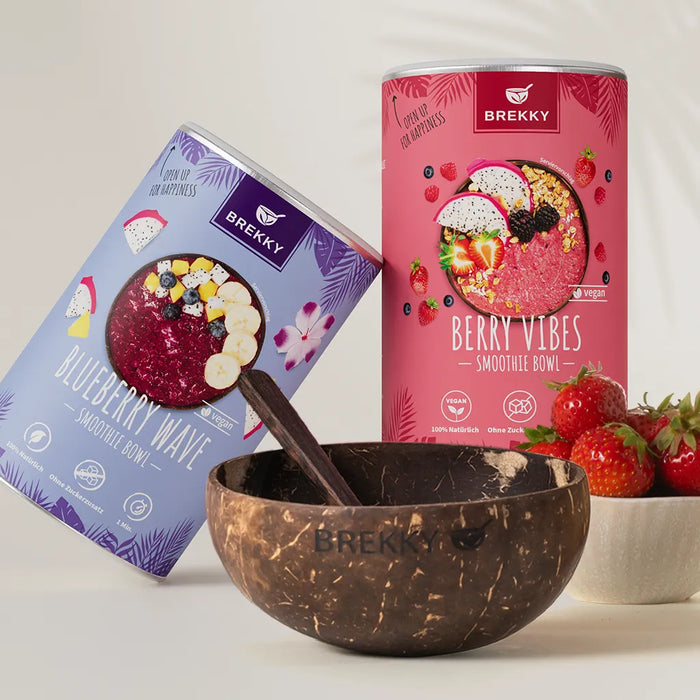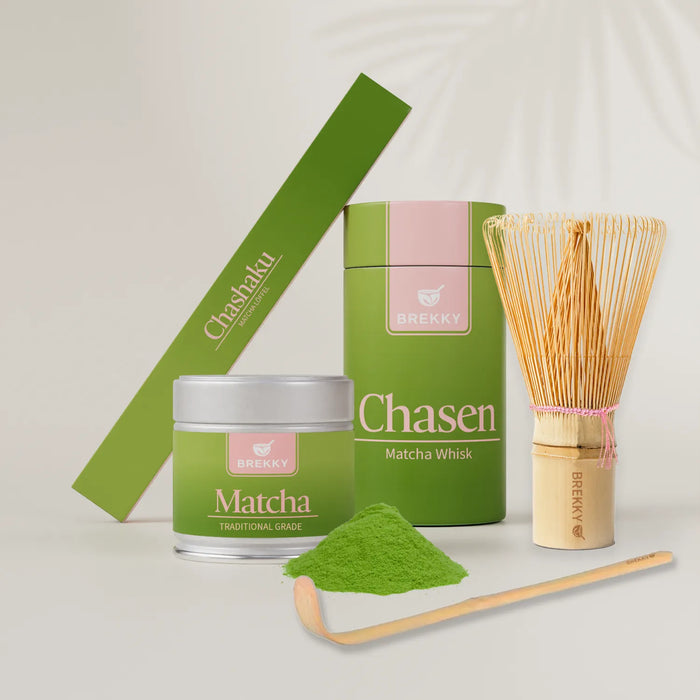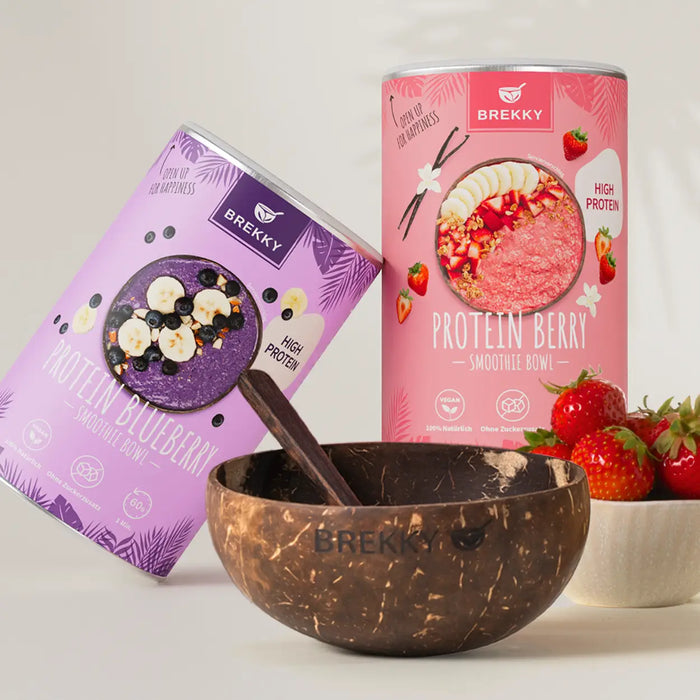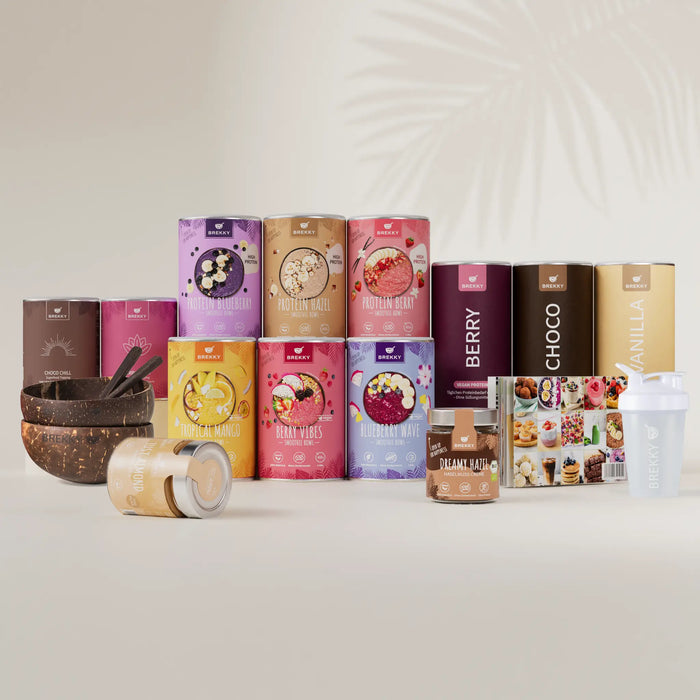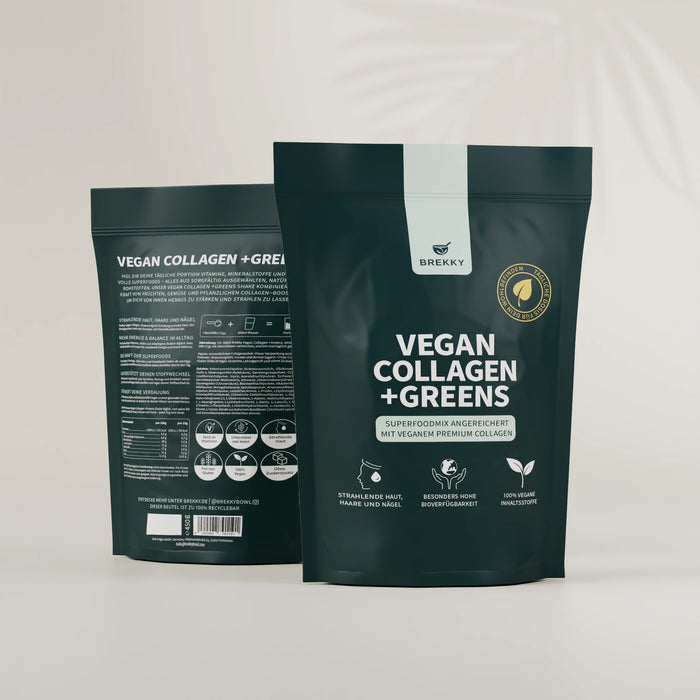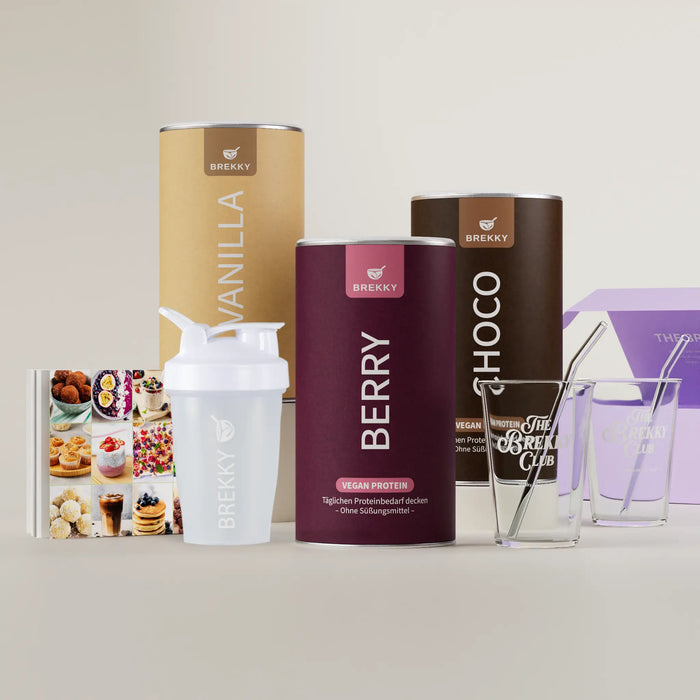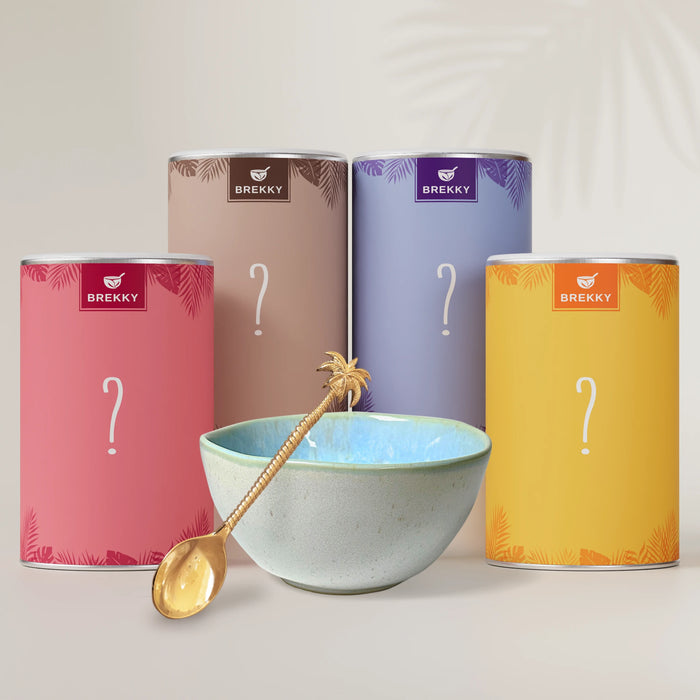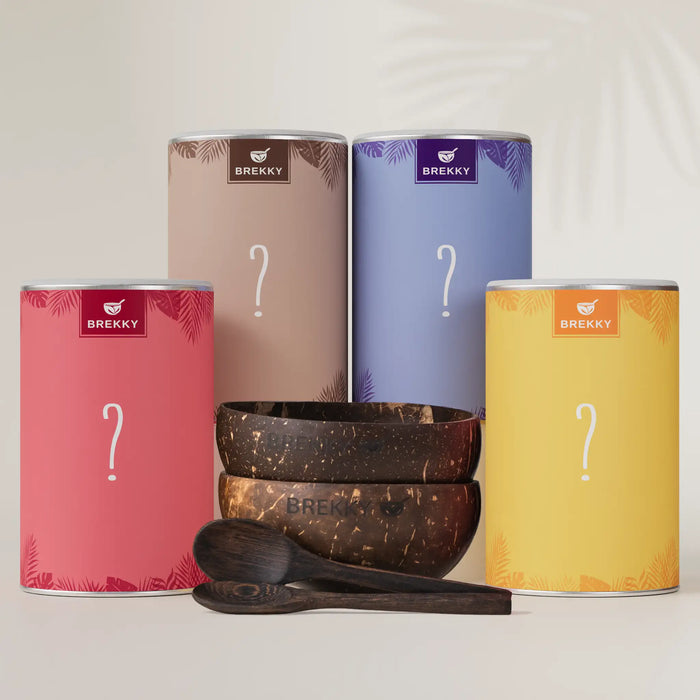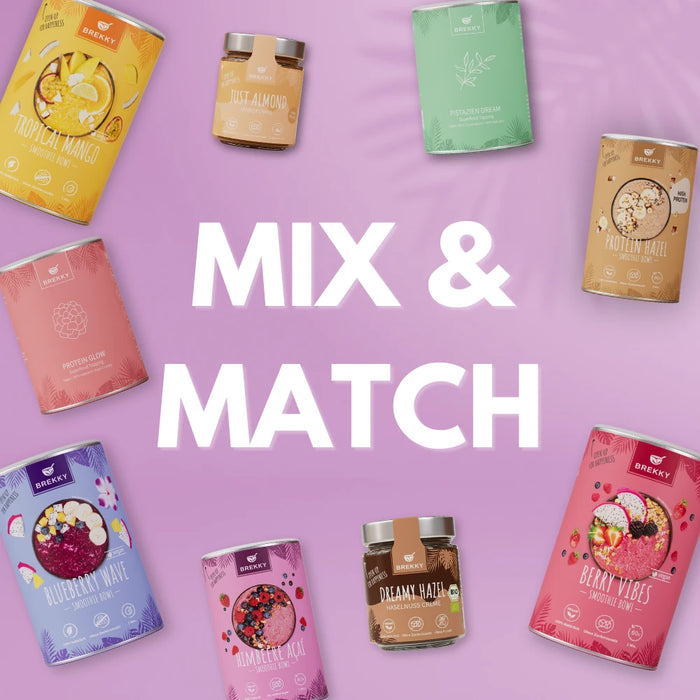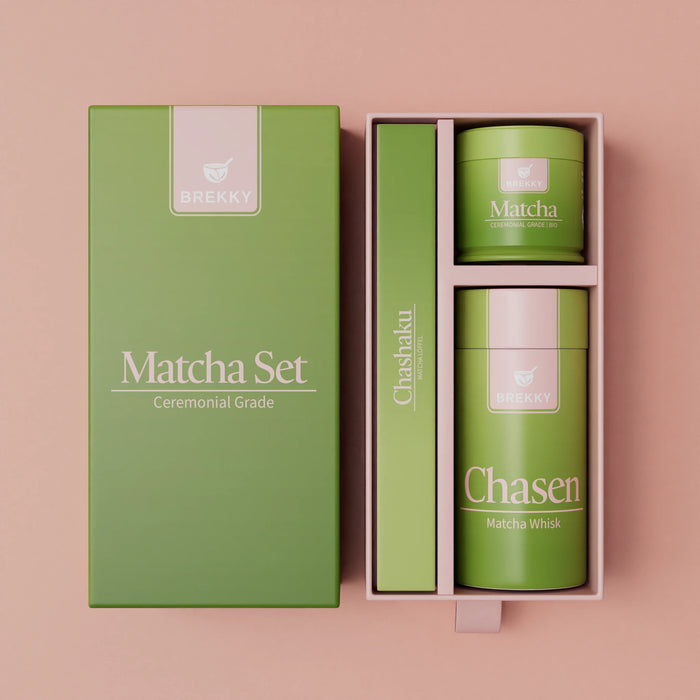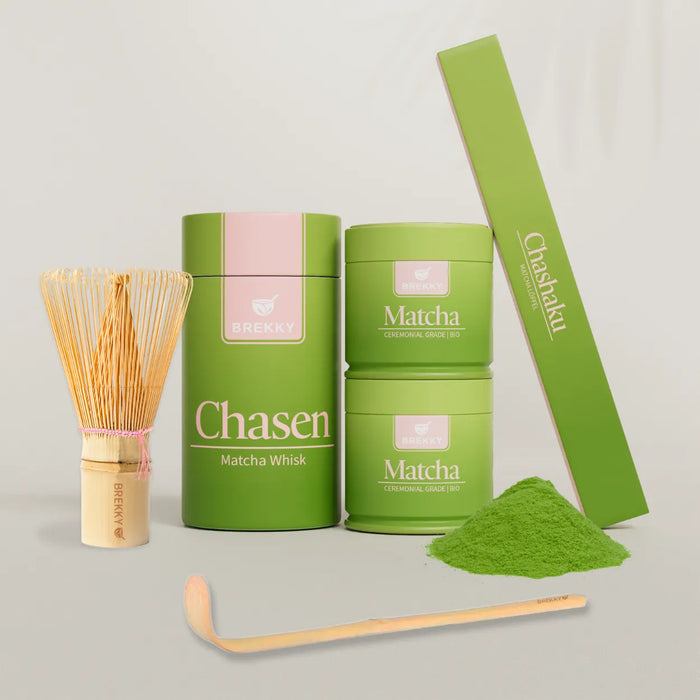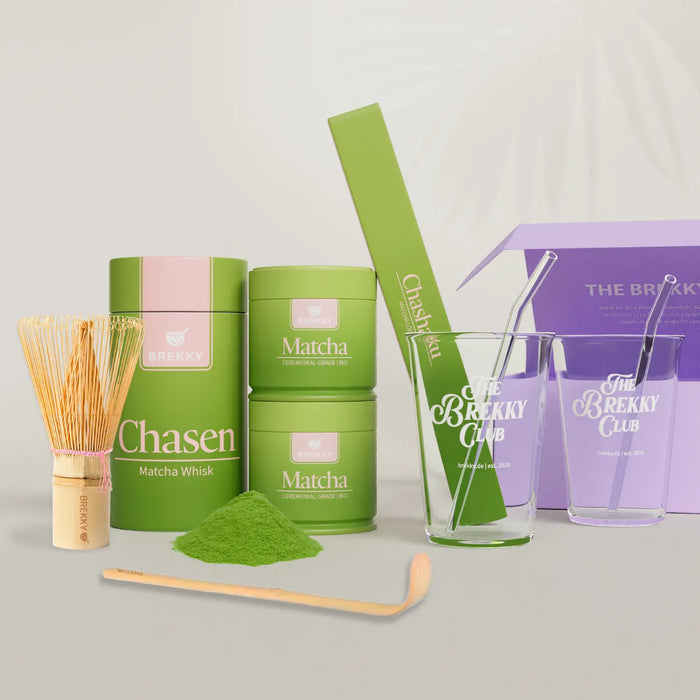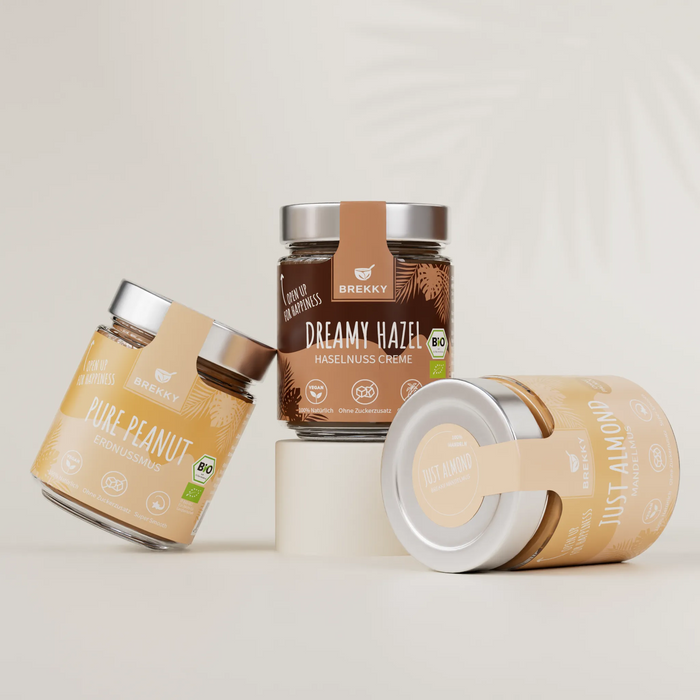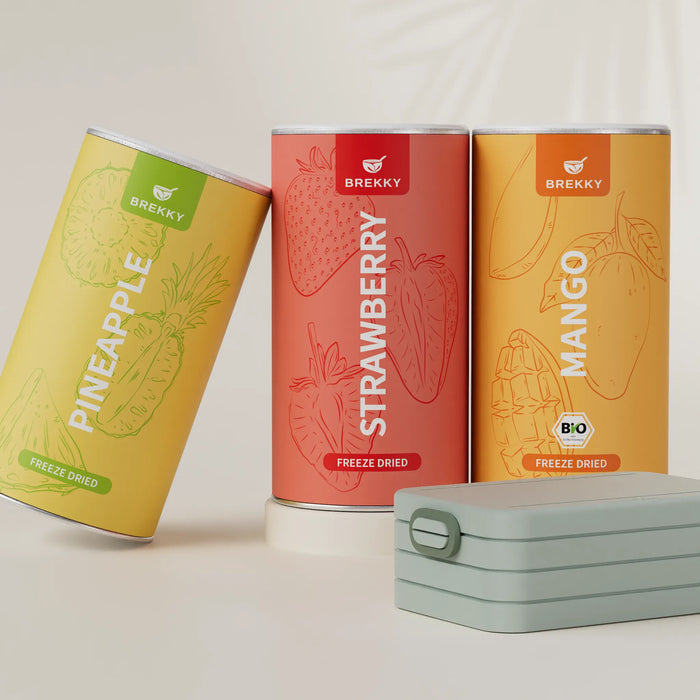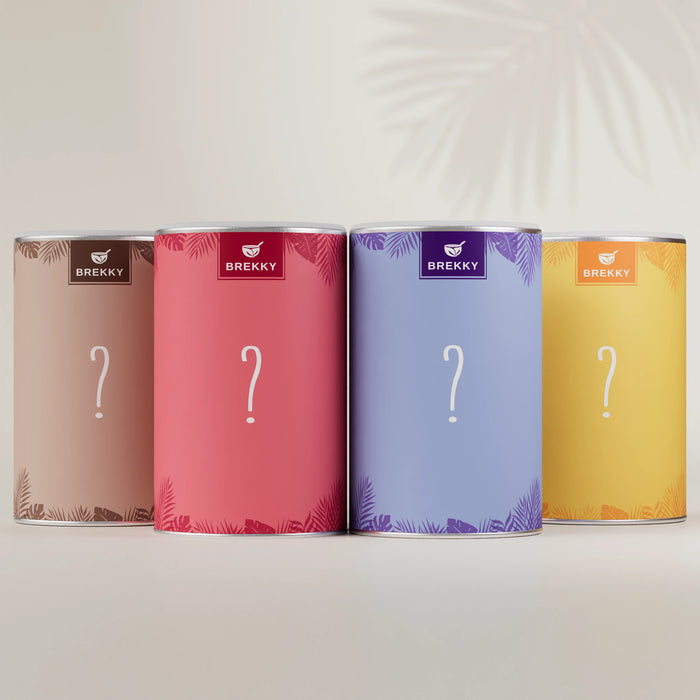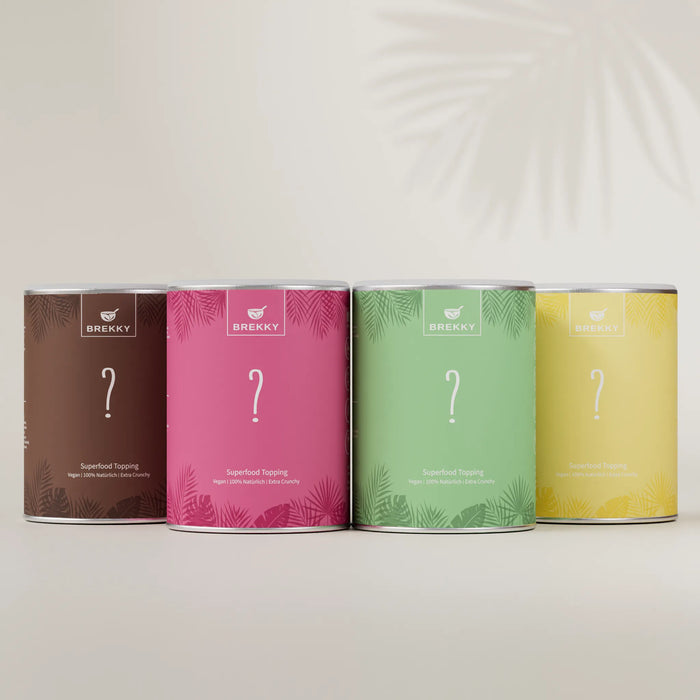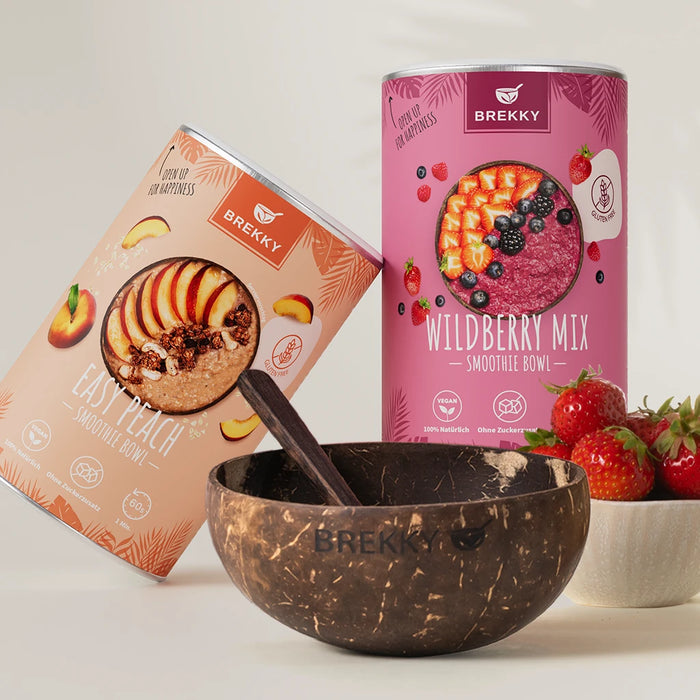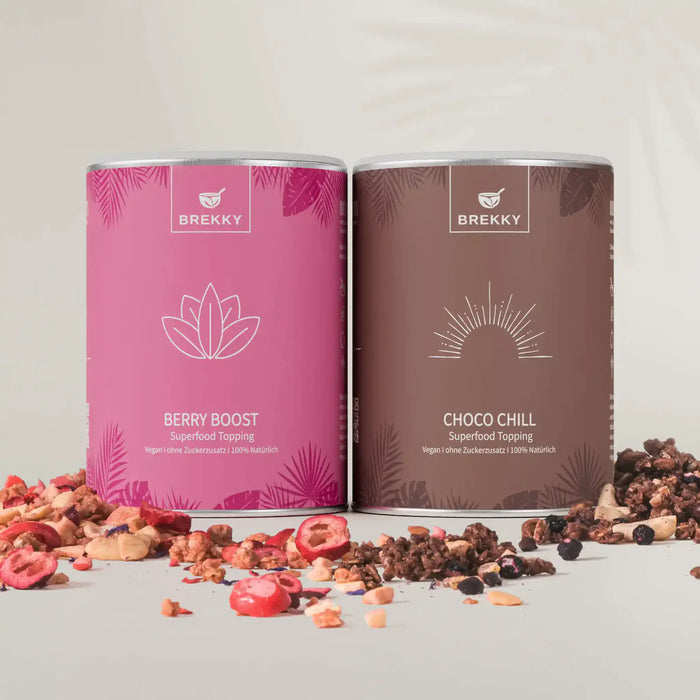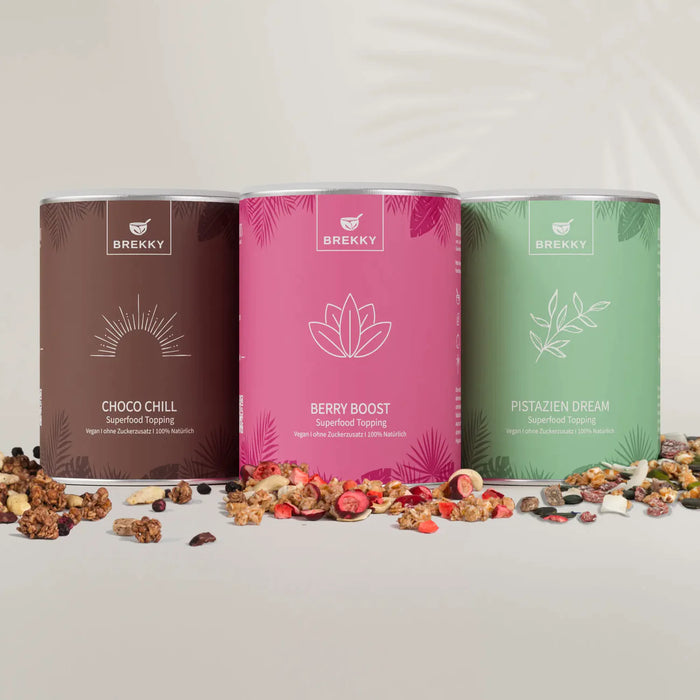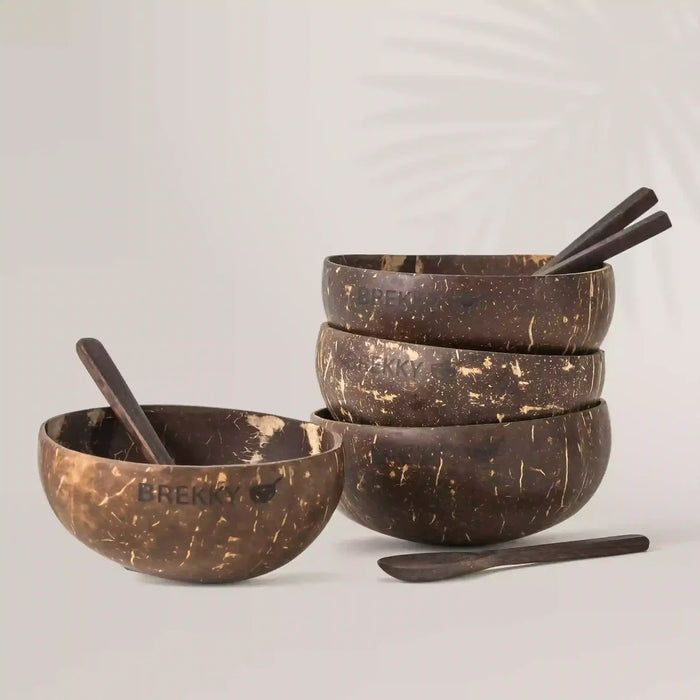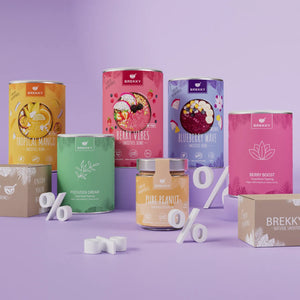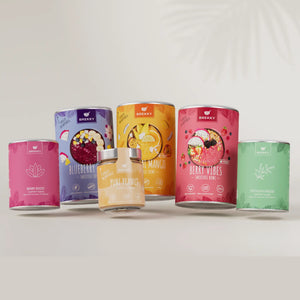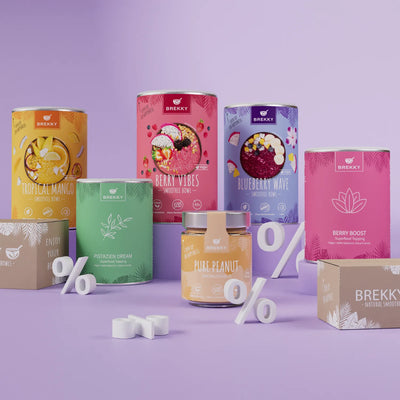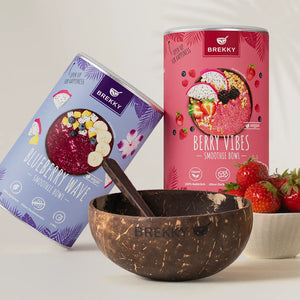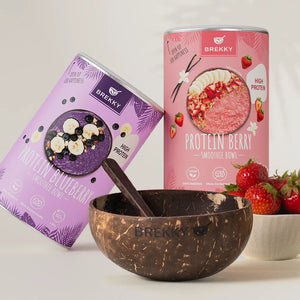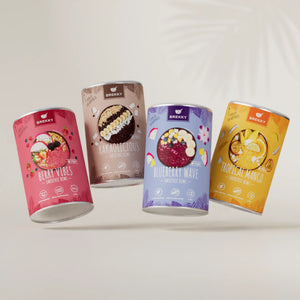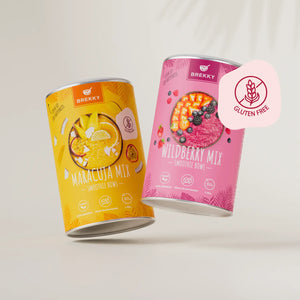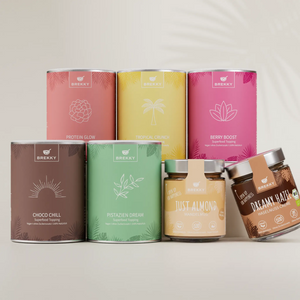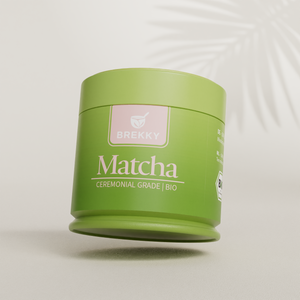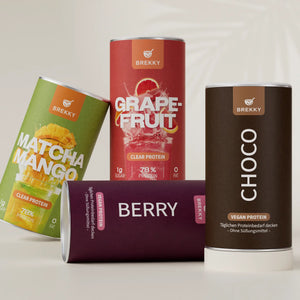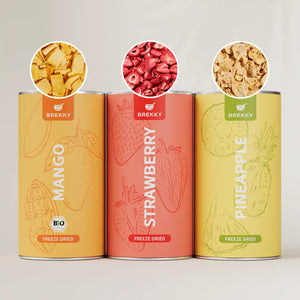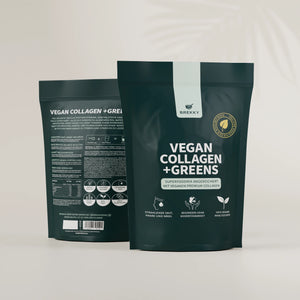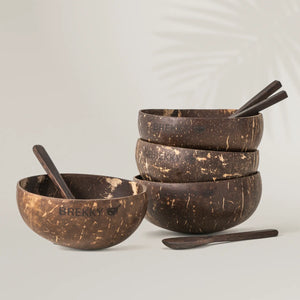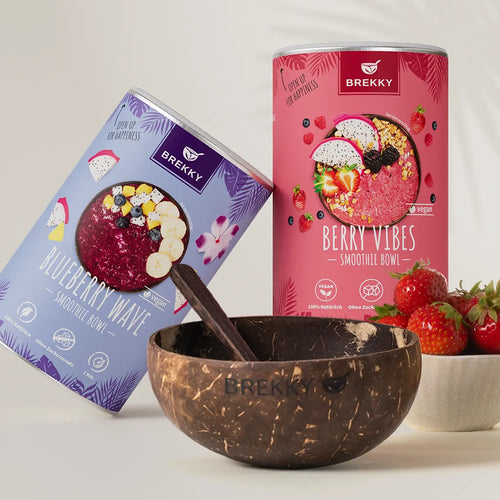Acai Smoothie Bowl: Recipes, nutritional values and preparation tips for your perfect breakfast
Contents
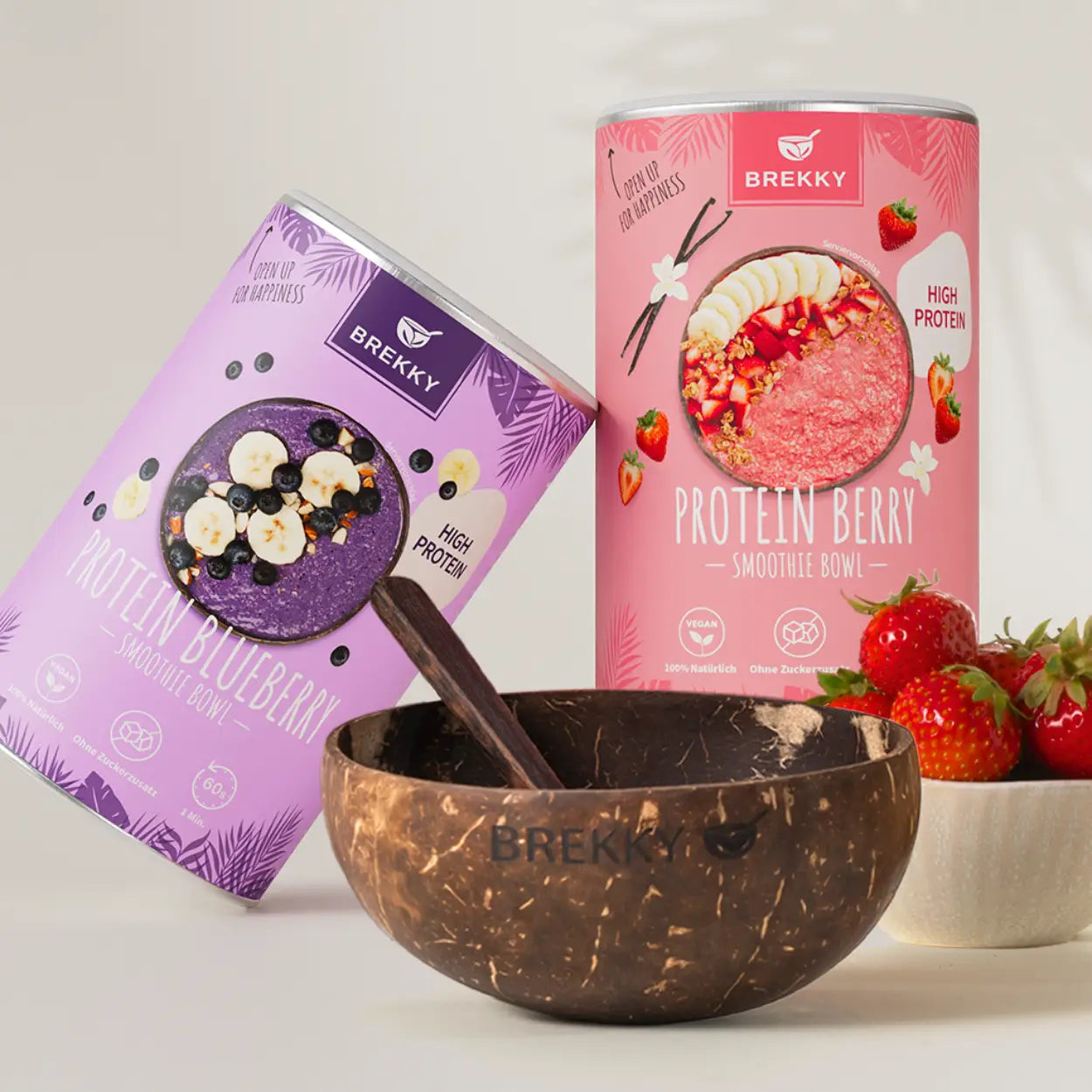
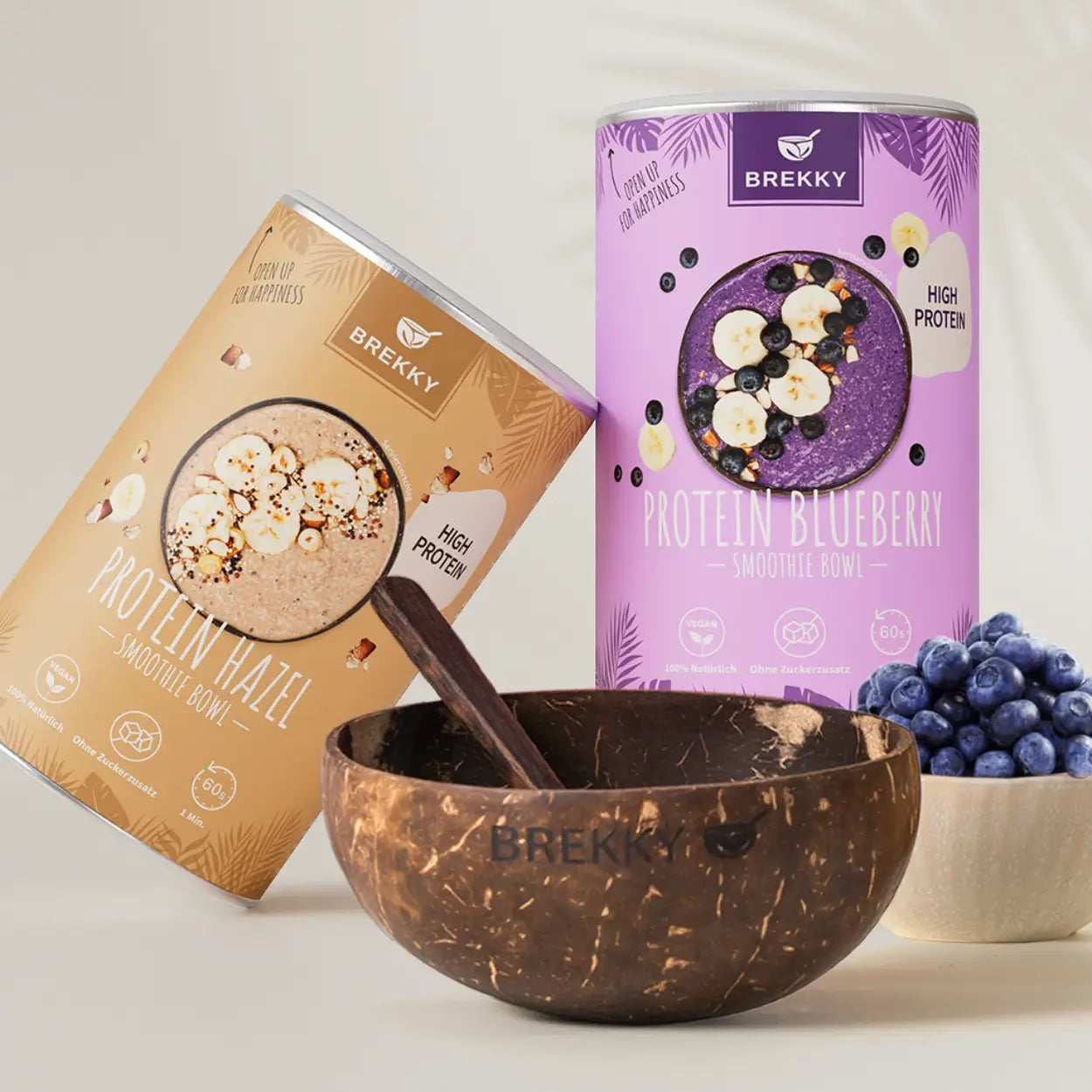
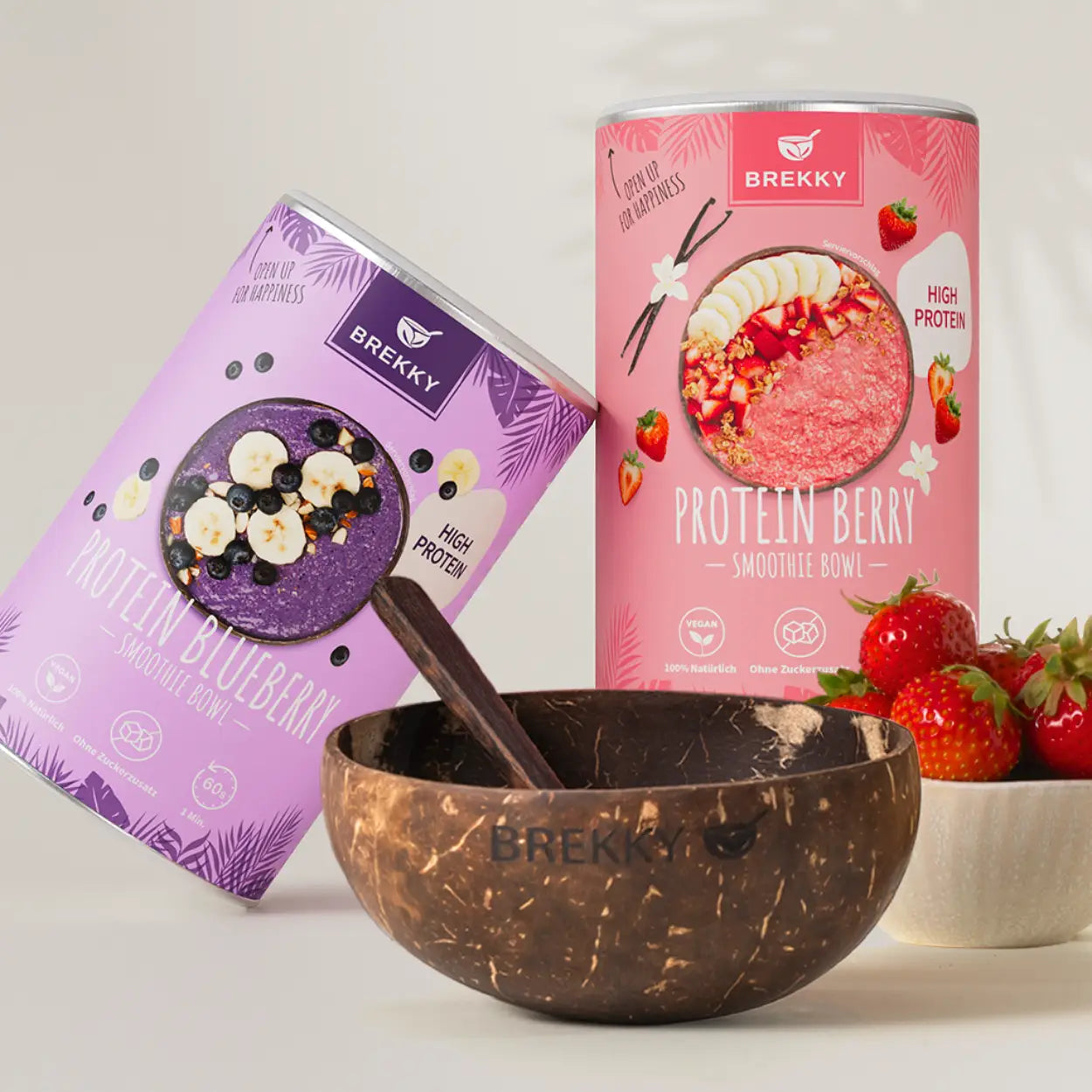
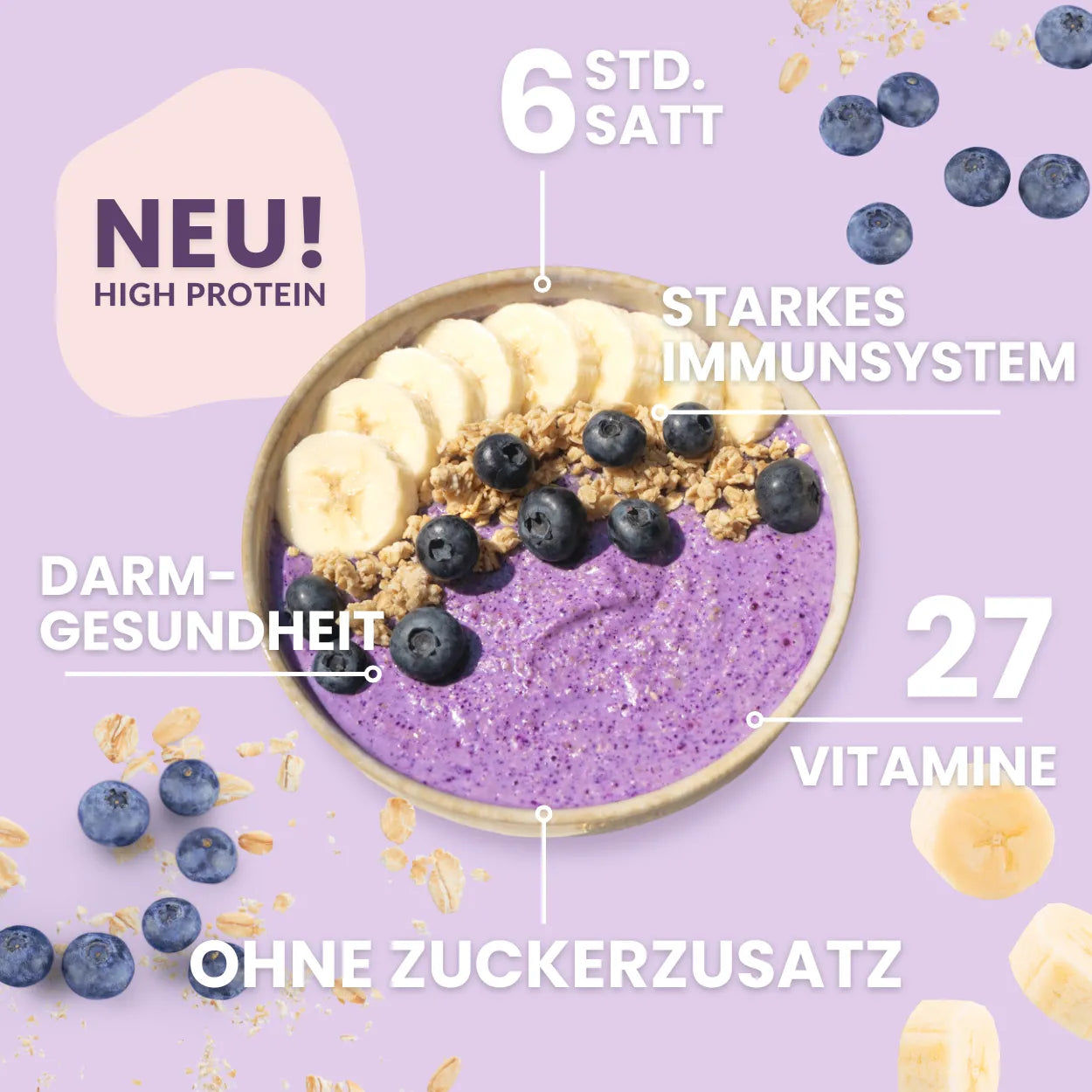
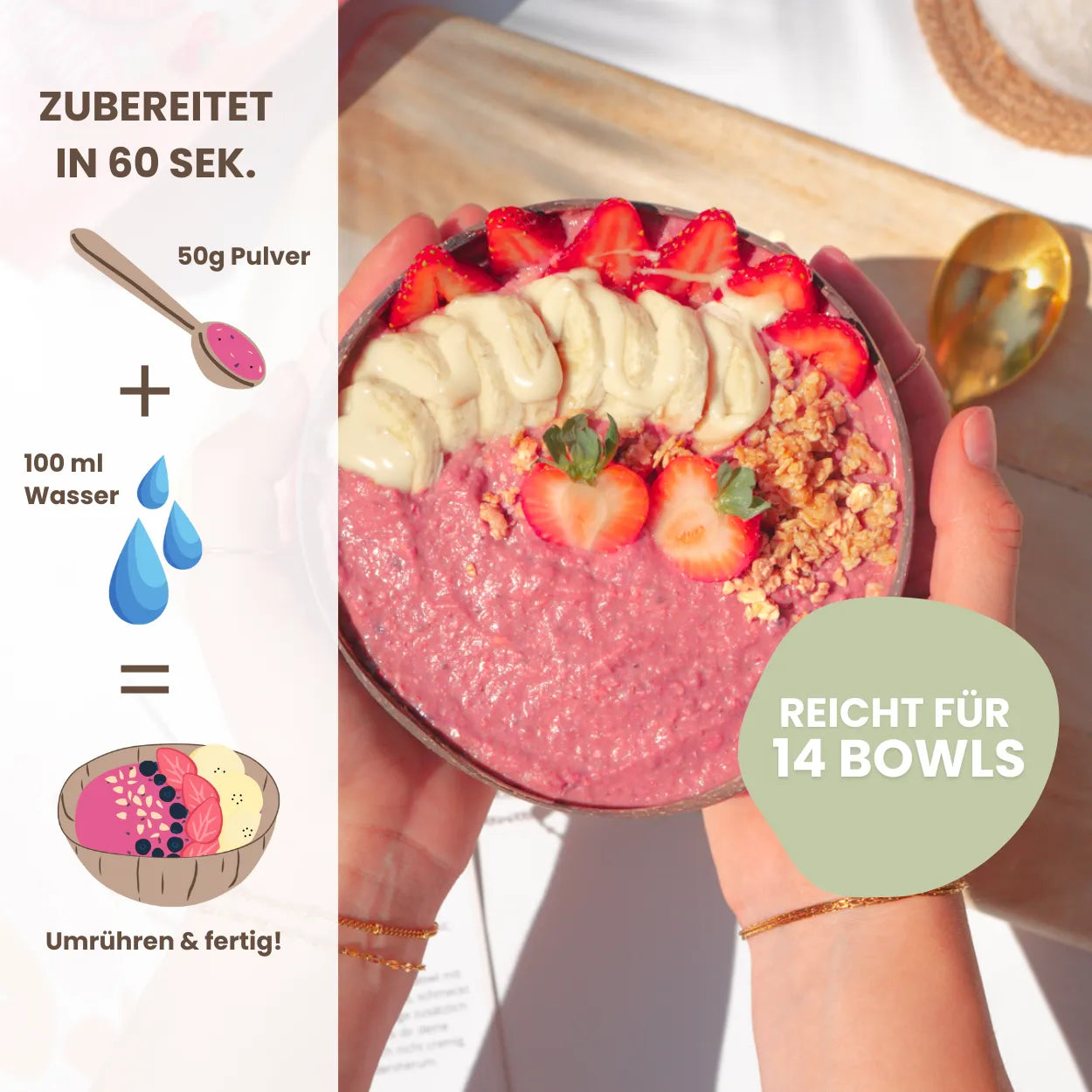
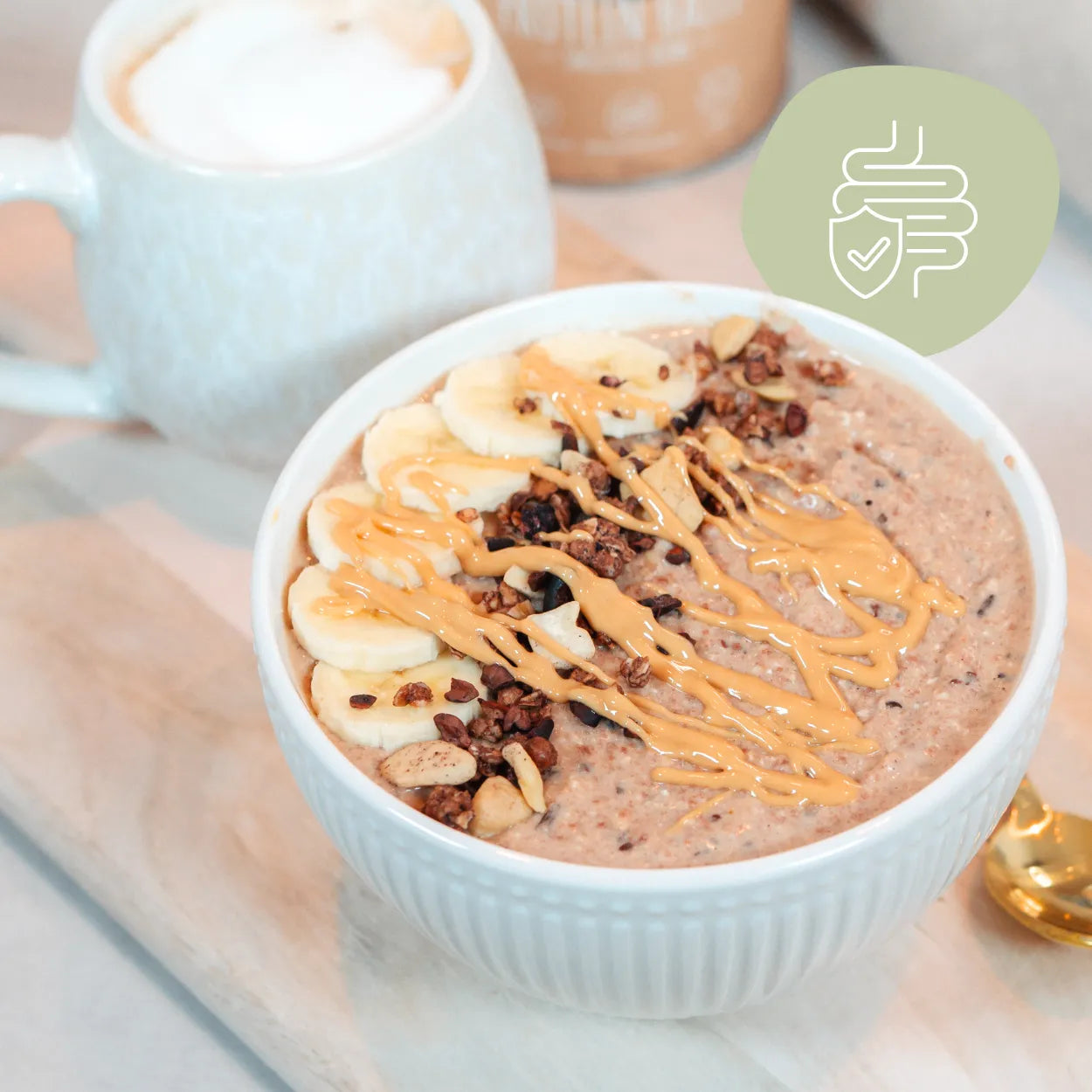
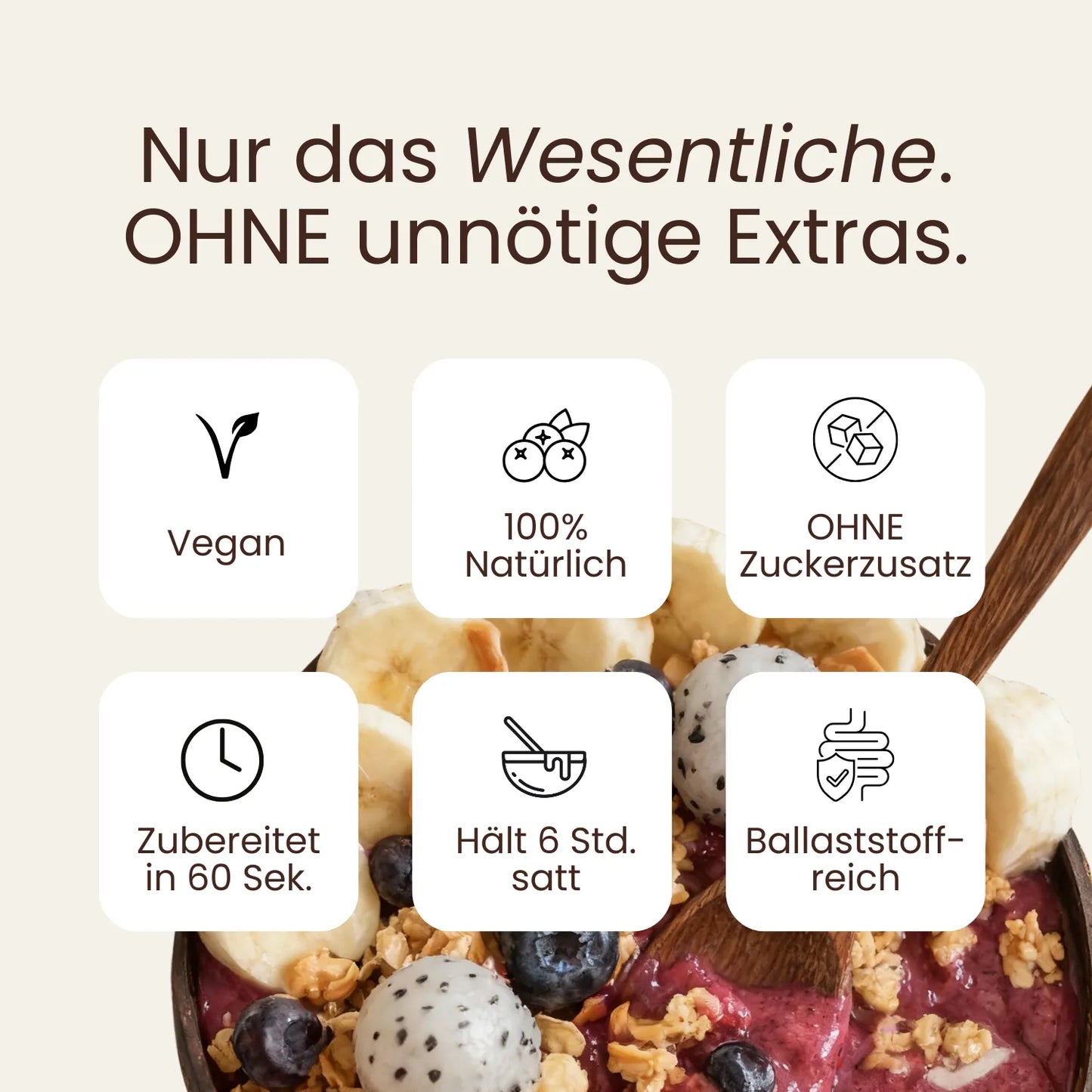

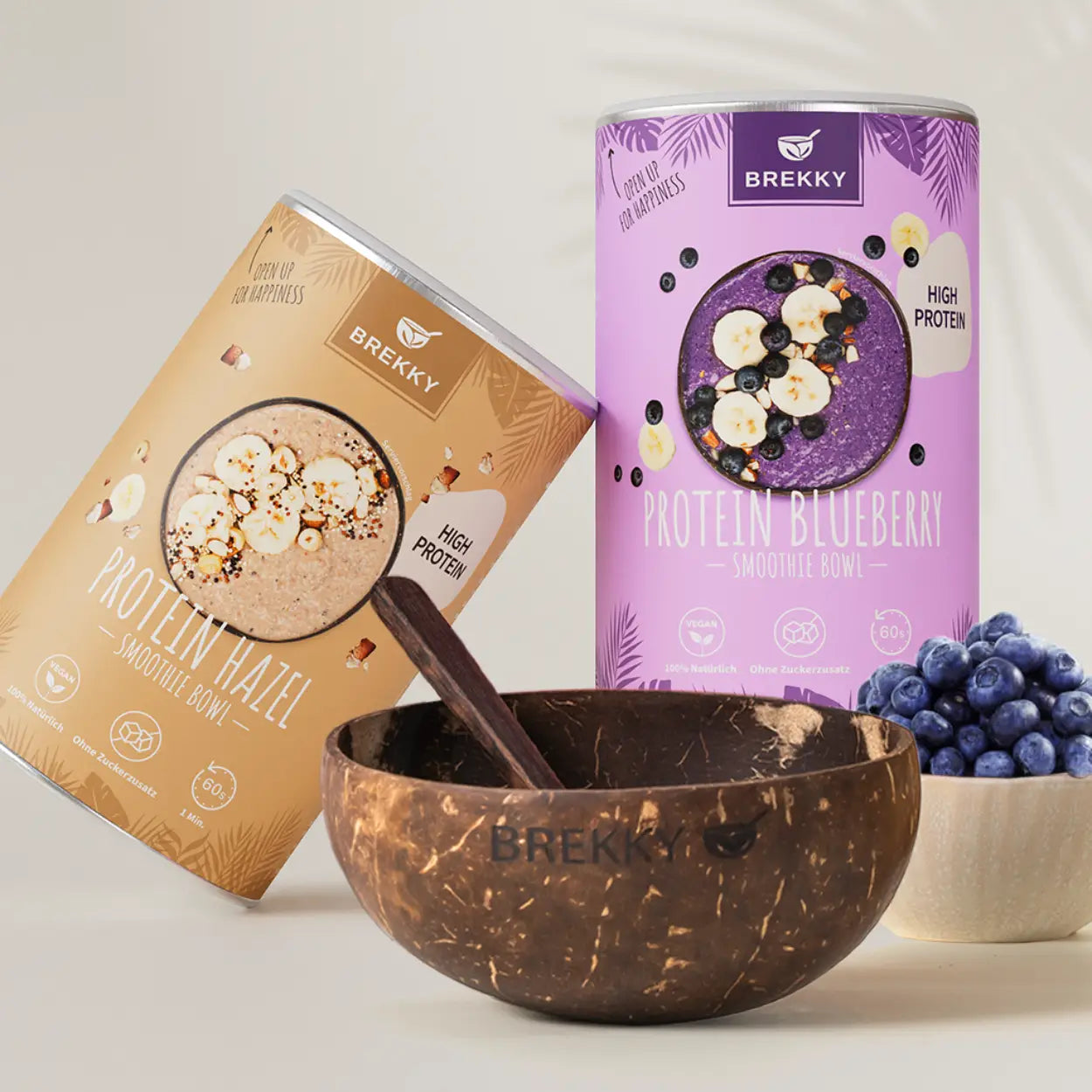
What is acai?
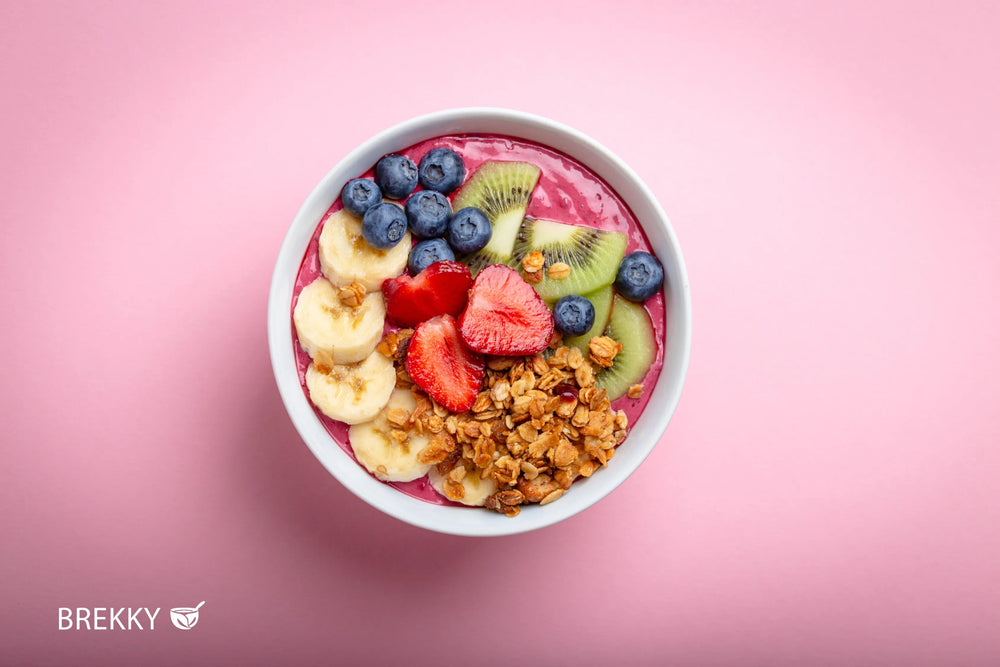
Difference between Acai Bowls and other Smoothie Bowls
Smoothie bowls generally aim to offer a creamy and thick consistency, with fresh ingredients prominently featured. While many smoothie bowls are built on a base of banana, berries, or spinach, the acai smoothie bowl features pureed acai as its main ingredient. This gives the bowl its deep purple color and slightly earthy, berry flavor.
-
Color intensity : Unlike a classic berry smoothie bowl, the acai bowl is often darker. This is due to the high proportion of acai fruit.
- Taste : Acai has a slightly tart undertone, unlike sweeter berries like strawberries or blueberries. When combined with sweet fruits like bananas, mango, or dates, it creates a harmonious flavor profile.
- Nutrients : The acai berry is often touted as a "superfood" because, in addition to antioxidants, it also provides essential fatty acids and fiber. In a smoothie bowl, the nutrient content depends largely on the fruit used.
- Tradition : Acai smoothie bowls have their roots in Brazil and have long been an integral part of the food culture there. Other smoothie bowls are mostly a modern dietary trend that has spread worldwide.
Because of these differences, the Acai Smoothie Bowl is particularly popular with those who are looking for variety in their breakfast and at the same time want to benefit from the advantages of the Acai berry.
Nutritional values of the Acai Smoothie Bowl
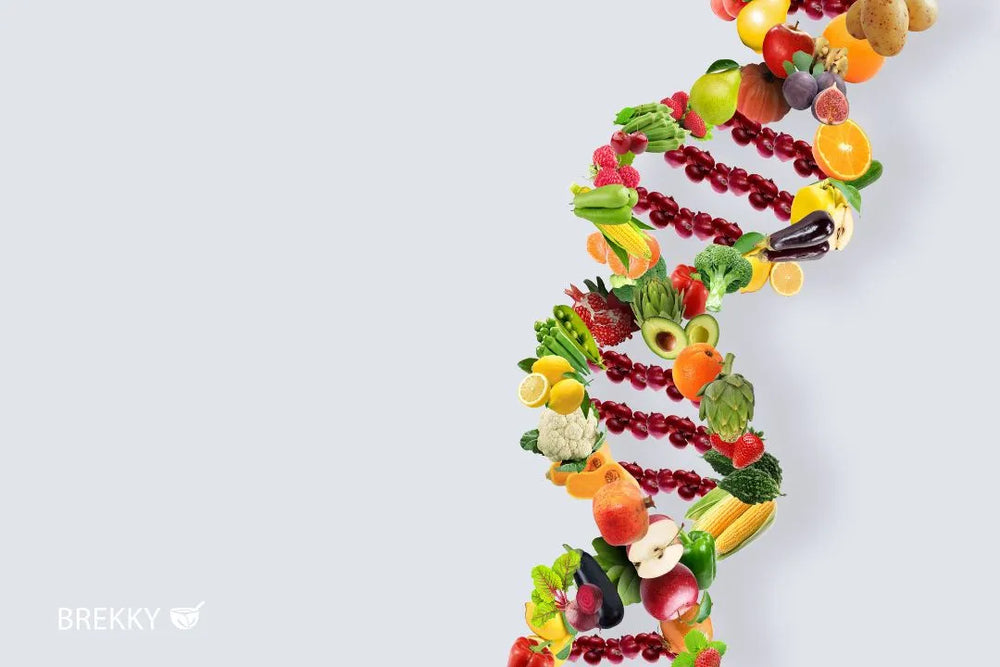
Calories and macronutrients
Many people want to know how an acai smoothie bowl affects their calorie balance. The answer, of course, depends on the individual ingredients. A classic acai smoothie bowl (with banana, berries, a splash of plant-based milk, and some topping) can contain between 300 and 500 calories per serving. That may sound high at first glance, but it all depends on the serving size and the exact ingredients.
- Carbohydrates : Bananas and other fruits provide natural sweetness and carbohydrates, providing a good energy boost in the morning.
- Protein : Depending on the recipe, you can enrich your acai smoothie bowl with yogurt, quark, or plant-based proteins (e.g., pea, hemp, or soy protein). This makes the bowl a balanced source of protein.
- Fats : The acai berry naturally contains healthy fats. Many toppings such as nuts, nut butter, or seeds provide additional valuable fatty acids.
-
Fiber : You can increase the fiber content by eating fruit, oatmeal, or chia seeds. This will keep you full longer, which is especially important at breakfast.
If you want to watch your calorie intake, you can make your Acai Smoothie Bowl calorie-conscious, for example by using more vegetables (e.g. spinach or cucumber), fewer bananas or low-sugar liquids.
Antioxidants and health benefits
A key reason for the acai berry's popularity is its high antioxidant content. These phytochemicals help protect the body from oxidative stress. Studies have shown that antioxidants can play a supportive role in cell renewal and promote immune function. However, the specific effect can vary from person to person.
-
Vitamin rich : Acai contains various vitamins, such as vitamin A and some B vitamins. Minerals such as calcium and magnesium may also be present in significant amounts.
- Increased energy : Many people report feeling more energized after consuming an acai smoothie bowl. This may be due to the combination of natural sugar sources (e.g., from bananas) and the relatively high nutrient content.
- Supports digestion : Due to its fiber content, the acai berry, along with other ingredients such as flaxseed or oatmeal, can contribute to healthy digestion.
It's important not to view acai as a miracle cure. A healthy diet is always based on a balanced mix of different foods. Nevertheless, an acai smoothie bowl can be a great part of a health-conscious lifestyle.
Comparison: Organic Acai vs. Conventional Acai
Anyone who regularly enjoys smoothie bowls will quickly come across the question: Organic Acai or conventional acai? Here's a quick overview:
- Quality : Organic acai comes from controlled organic farming without the use of synthetic pesticides. This can contribute to a more authentic flavor and is generally kinder to the environment.
- Nutrient content : It's often claimed that organic products contain more nutrients. This may be true, but it doesn't always have to be. Nevertheless, many people value organic quality for ethical and environmental reasons.
- Price : Organic versions can be more expensive than conventional products. If environmental protection and sustainability are important to you, the extra cost may be worth it. Otherwise, conventional acai will do, as long as it comes from reputable sources.
Many connoisseurs consciously choose organic acai because they want to avoid pesticides and support small cooperatives in the countries of origin. Which form you choose depends on your personal preferences and budget.
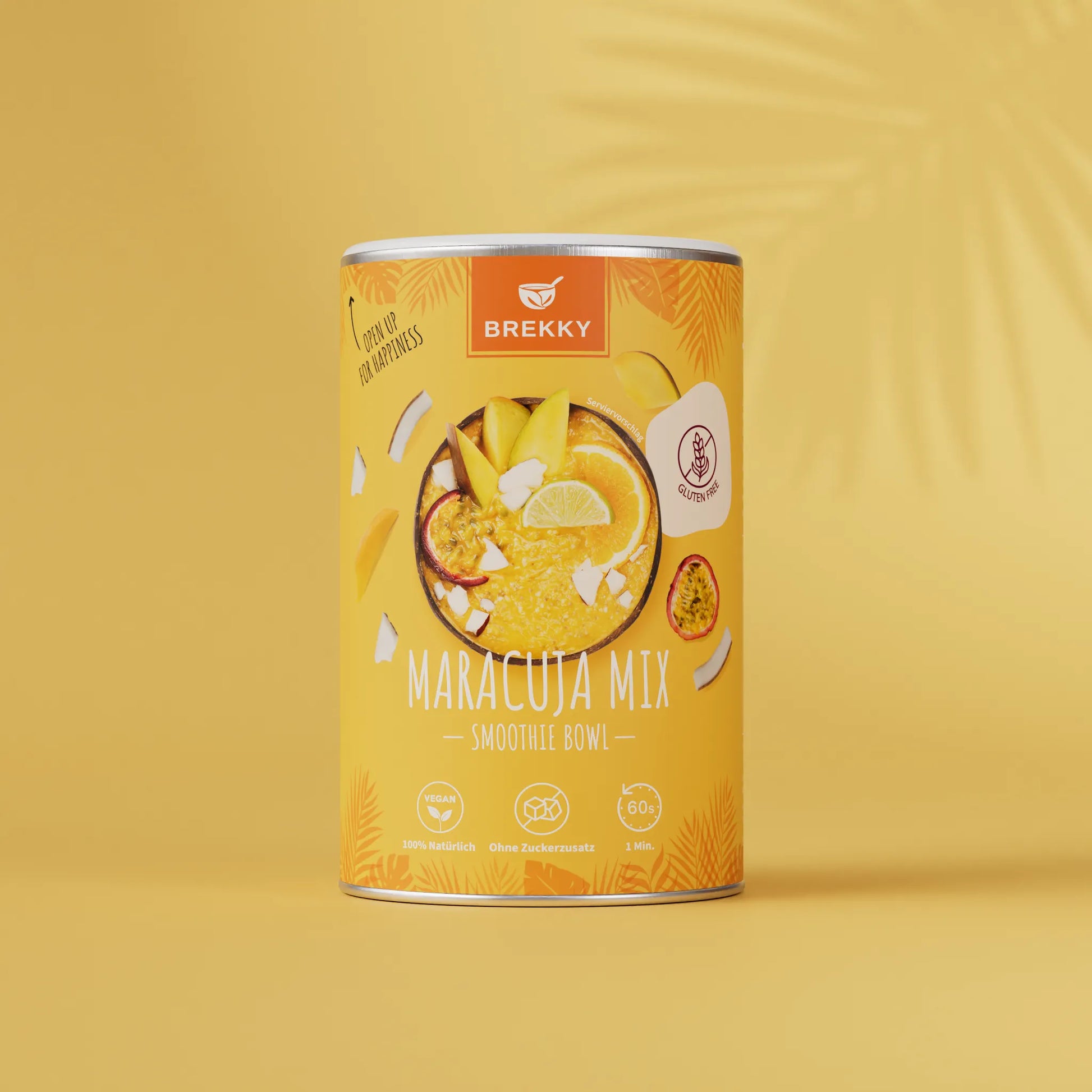
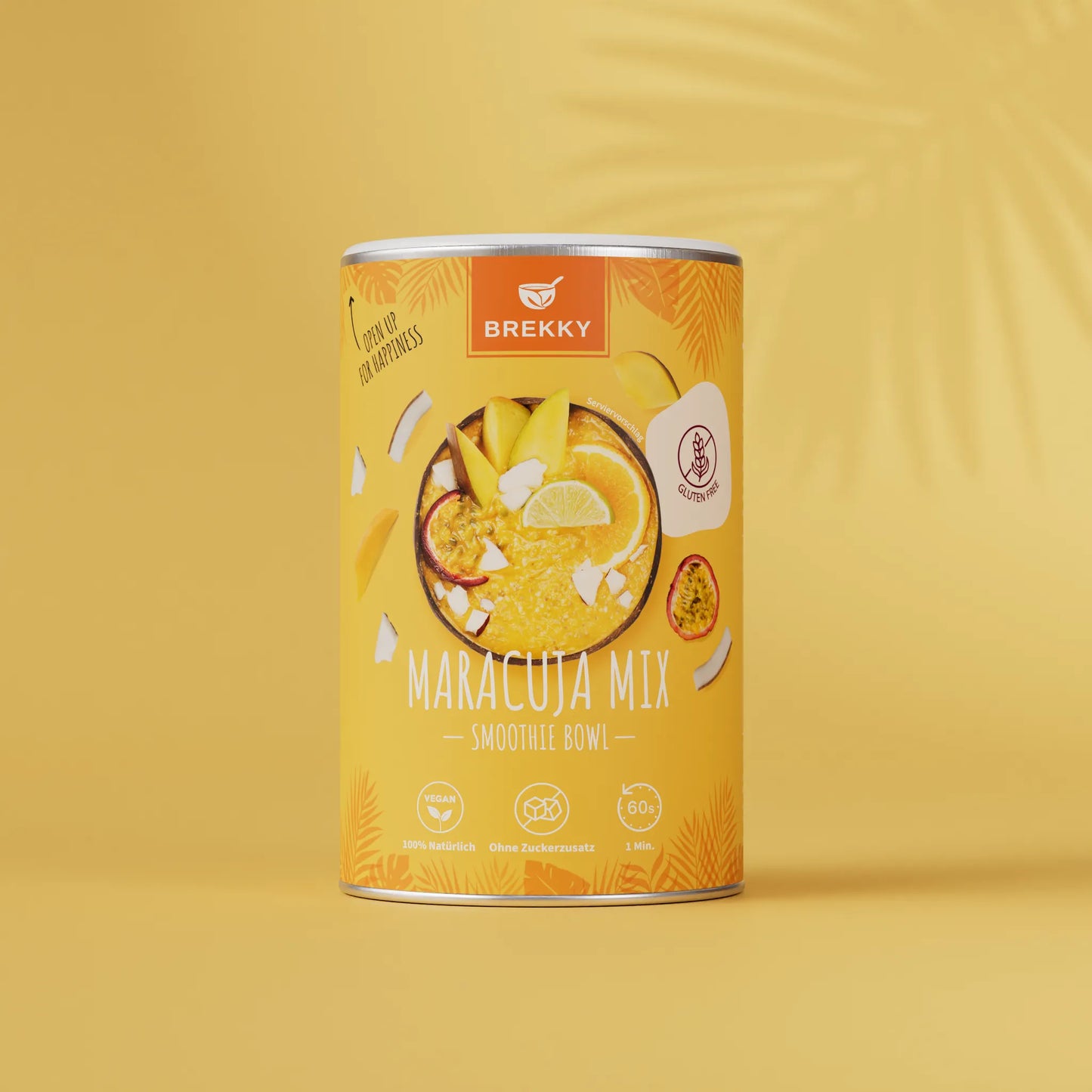
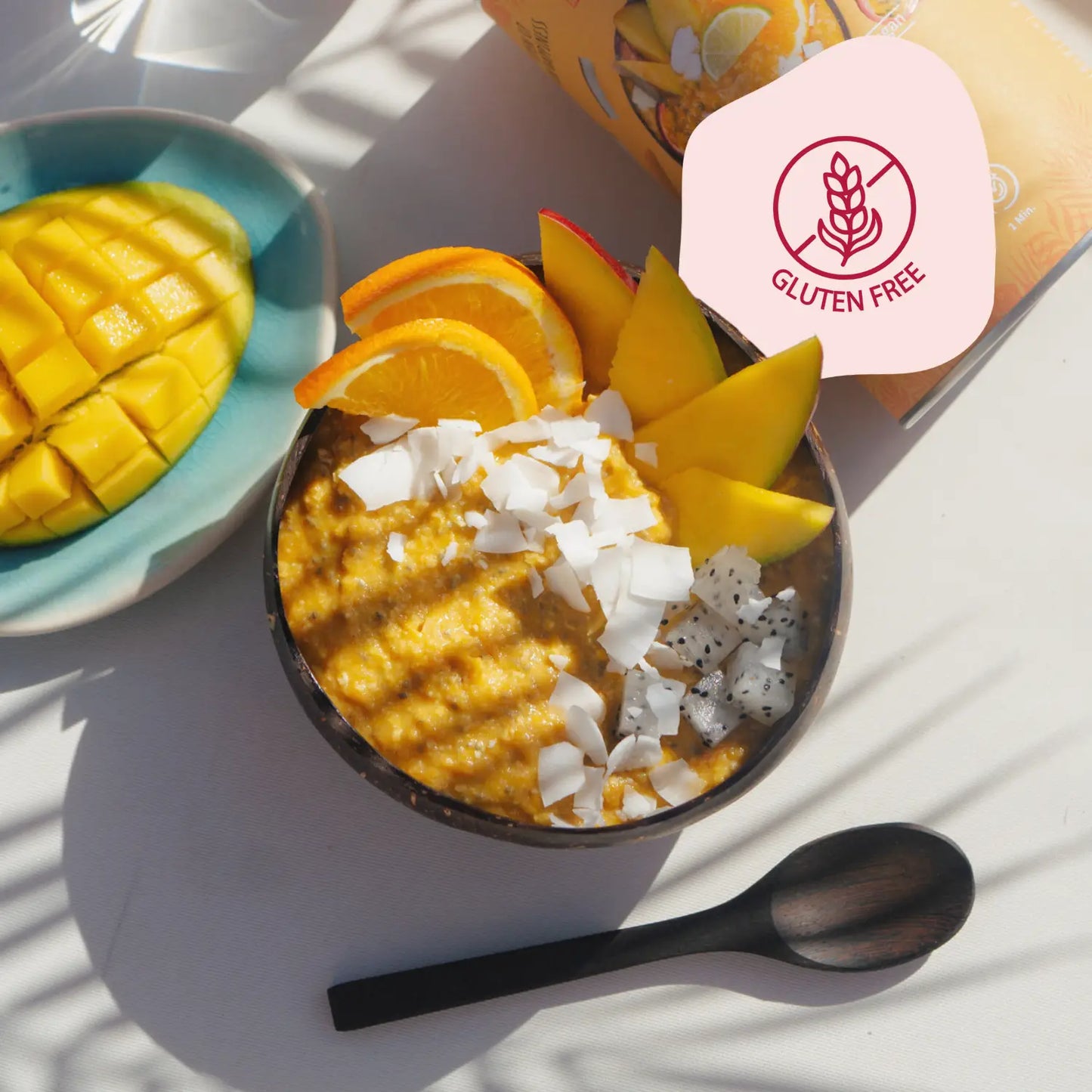
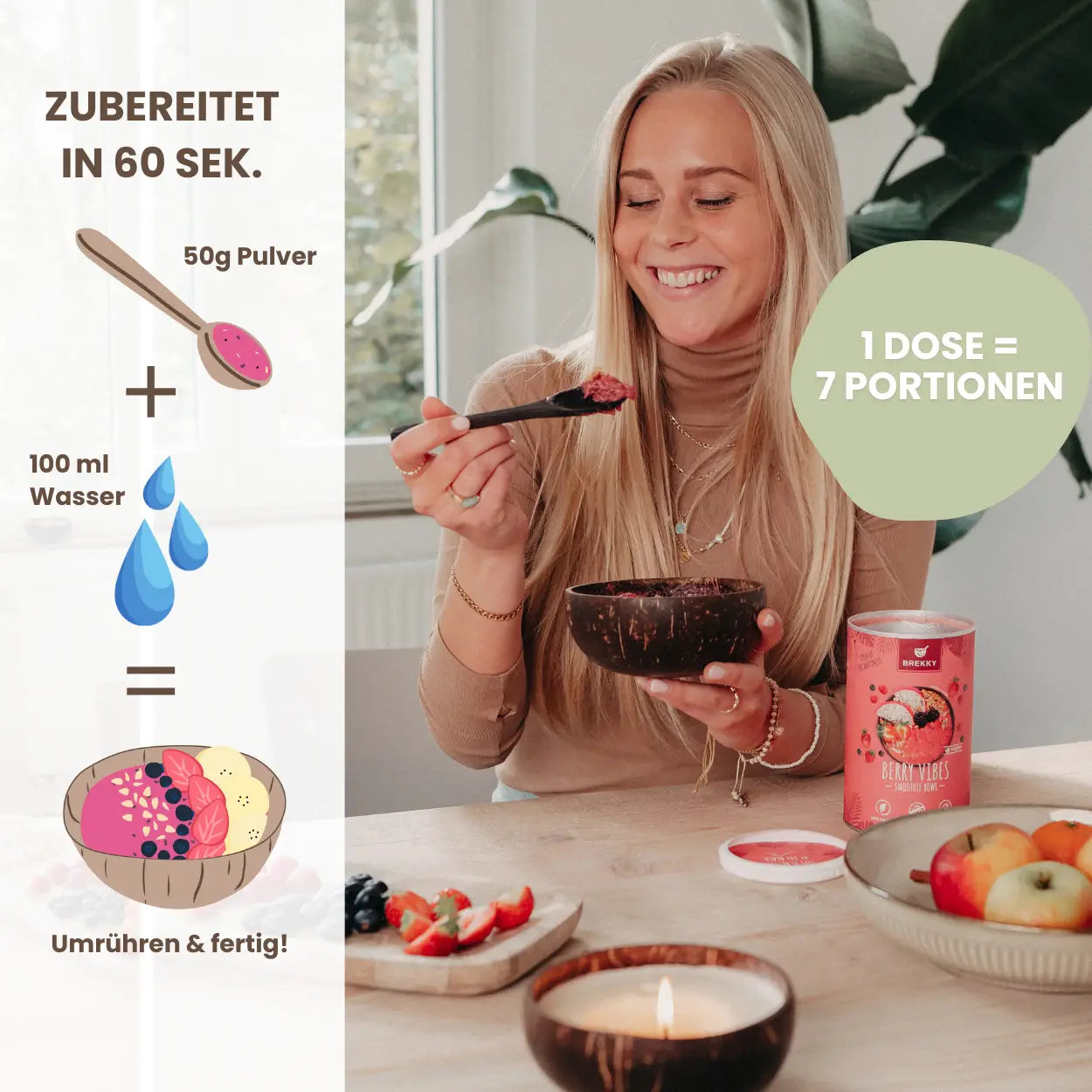

Preparing the perfect Acai Smoothie Bowl
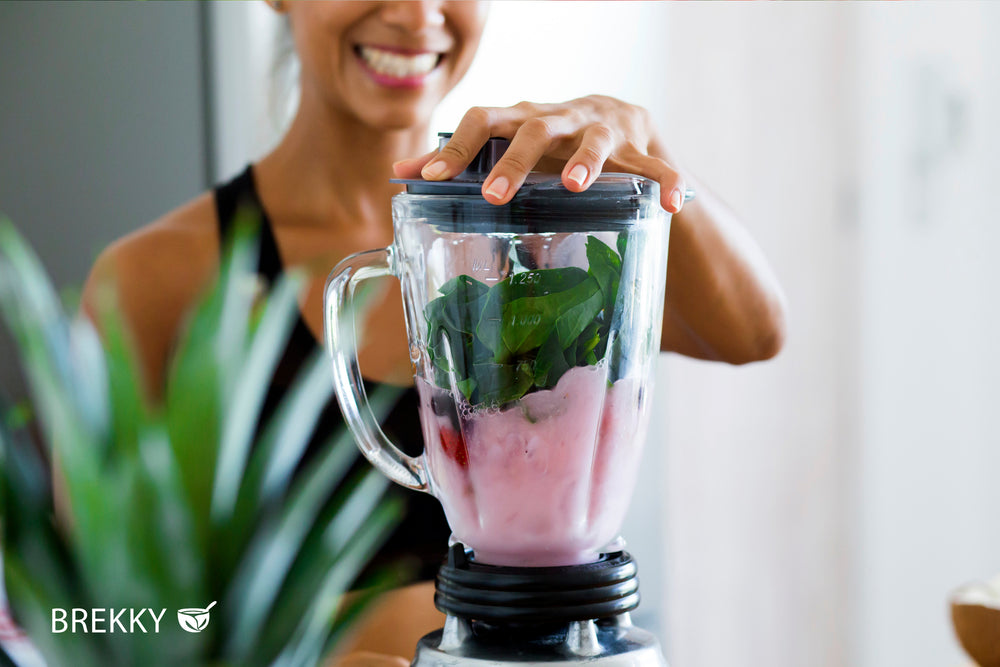
Basic recipe for Acai smoothie bowls
An acai smoothie bowl Naturally, this varies from recipe to recipe. However, a solid basis can be defined:
-
Frozen acai packs or acai powder : Choose one option. For frozen acai, you'll typically need about 100 g of acai puree per serving. For powder, you'll need about 1-2 tablespoons. Follow the manufacturer's instructions.
- Liquid : Add some liquid—for example, plant-based milk (almond, oat, coconut) or juice. Start with about 100 ml and adjust the amount later to achieve the right consistency.
- Bananas or other fruits : A frozen banana provides natural sweetness and a creamy texture. Berries, mango, or pineapple are also good alternatives.
- Optional sweetener : If you prefer a sweeter flavor, you can add dates, honey, or agave syrup. Some fruit blends are naturally so sweet that you don't need any sweetener at all.
- Toppings : You can get creative here. Typical toppings include fresh berries, shredded coconut, granola, chia seeds, or chopped nuts.
Preparation:
- First, put the frozen fruit and acai into the blender.
- Then you add the liquid.
- Mix everything on high speed until a creamy consistency is achieved.
- Pour the mixture into a bowl and garnish with your favorite toppings.
With a little practice, you'll quickly find the perfect blend of flavor and texture. A tip: Make sure you use plenty of frozen fruit to keep the acai smoothie bowl nice and cold.
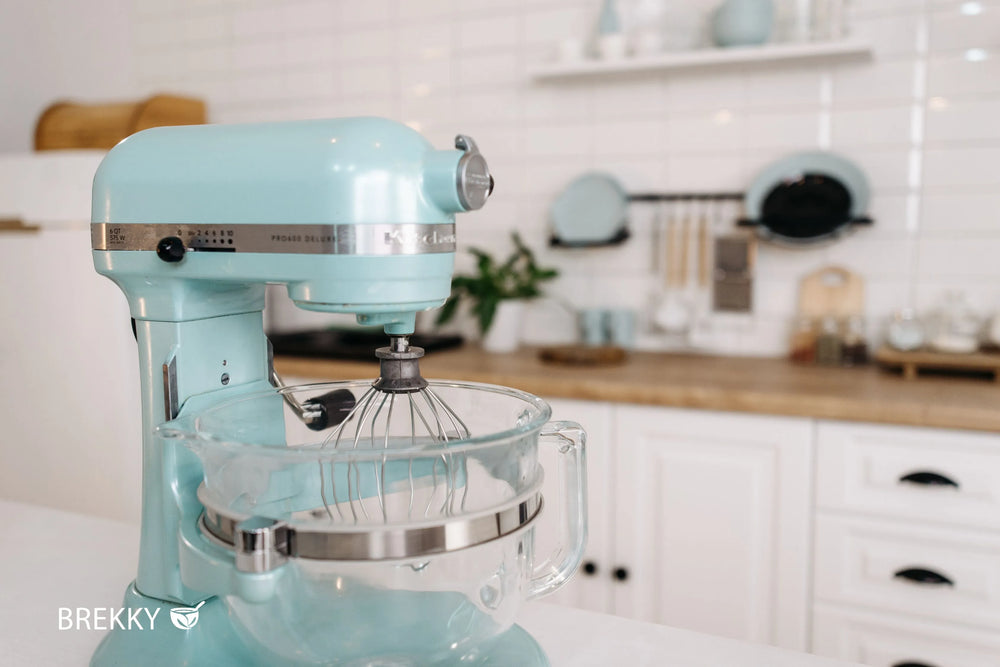
Preparation with the Thermomix
Many acai smoothie bowl fans swear by the Thermomix because it can blend quickly and weigh simultaneously. The steps remain similar to those for a traditional blender:
- Prepare : Gather frozen banana, frozen berries, and frozen acai packs or powder.
- Weighing : In the Thermomix bowl, you weigh exactly what you need. This way, you can measure your "acai smoothie bowl Thermomix" precisely.
-
Mixing : Gradually increase the speed (level 5–10) and observe the consistency.
- Check : If you feel the mixture is too solid, add a sip of liquid.
- Filling and decorating : Once the desired consistency is reached, fill the cream into bowls and add toppings.
The Thermomix allows for smooth and fast blending, so you can enjoy your breakfast in no time. Important: Make sure to scrape the mixture from the sides occasionally to maintain a consistent texture.
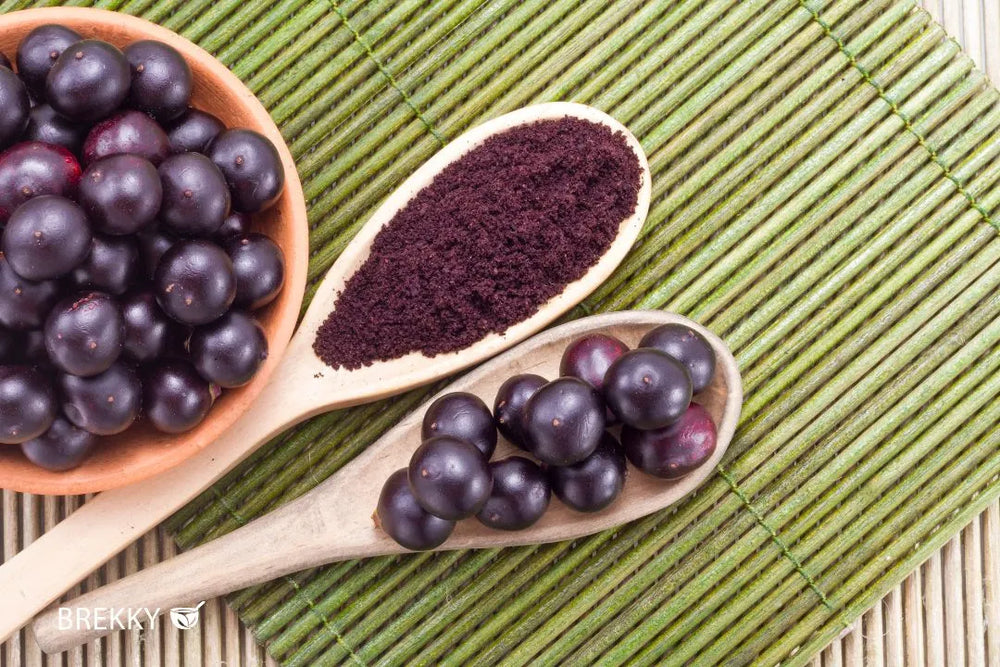
Tips for the right consistency
The acai smoothie bowl thrives on its creamy and thick texture. It should be easy to scoop and not too runny. Keep the following in mind:
- Frozen ingredients : The more frozen fruit or ice cubes you use, the thicker your bowl will be.
-
Less liquid : It's better to start with a little liquid and increase it slowly. Adding more liquid later is usually easier than trying to thicken a bowl that's too thin.
- Blender quality : A powerful blender or Thermomix helps you blend the ingredients quickly and evenly. You may need to blend in batches, stirring occasionally.
- Addition of “binding agents” : Ingredients such as avocado, nut butter or yogurt can provide an even denser consistency.
If you take all these aspects into account, you can easily create a perfect acai smoothie bowl.
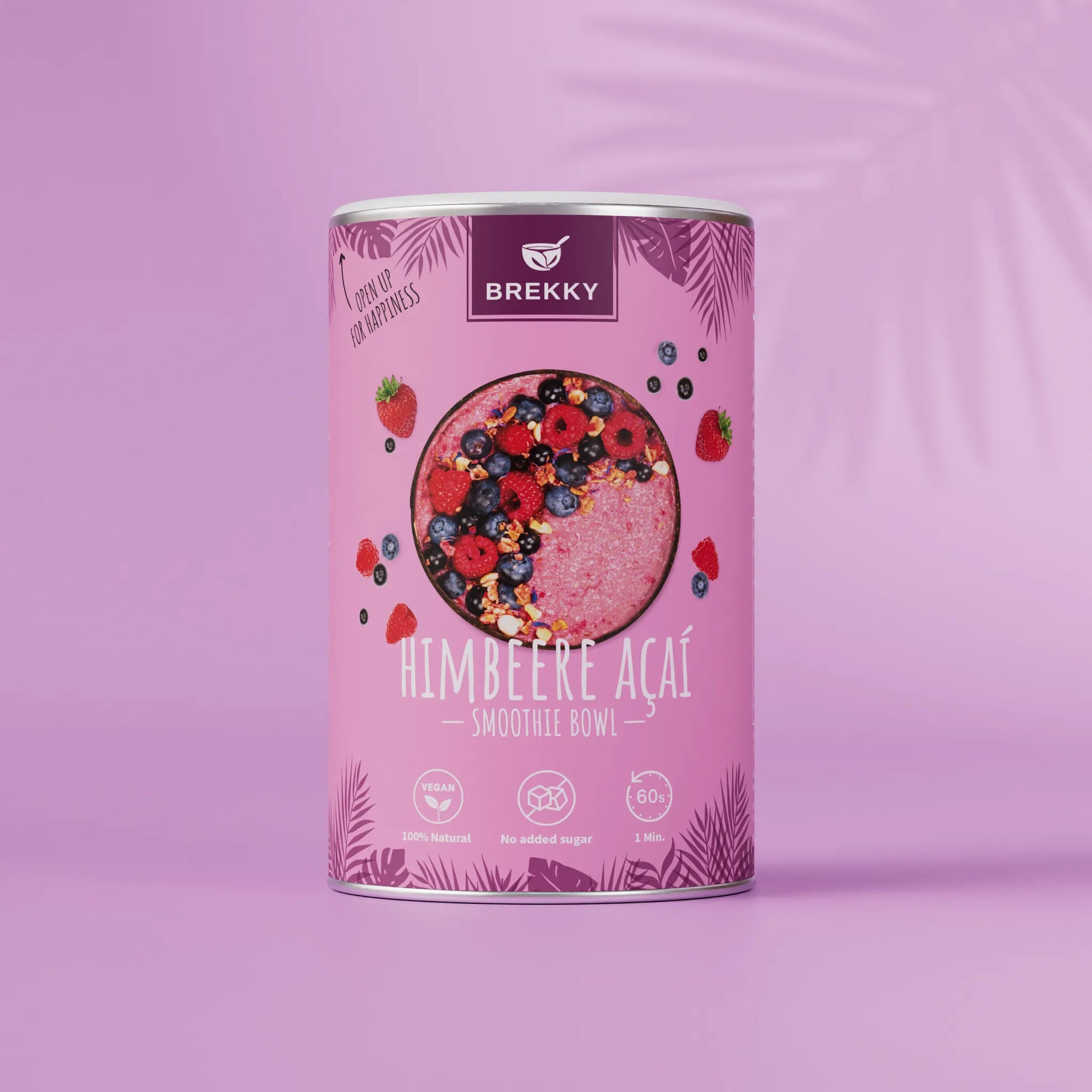
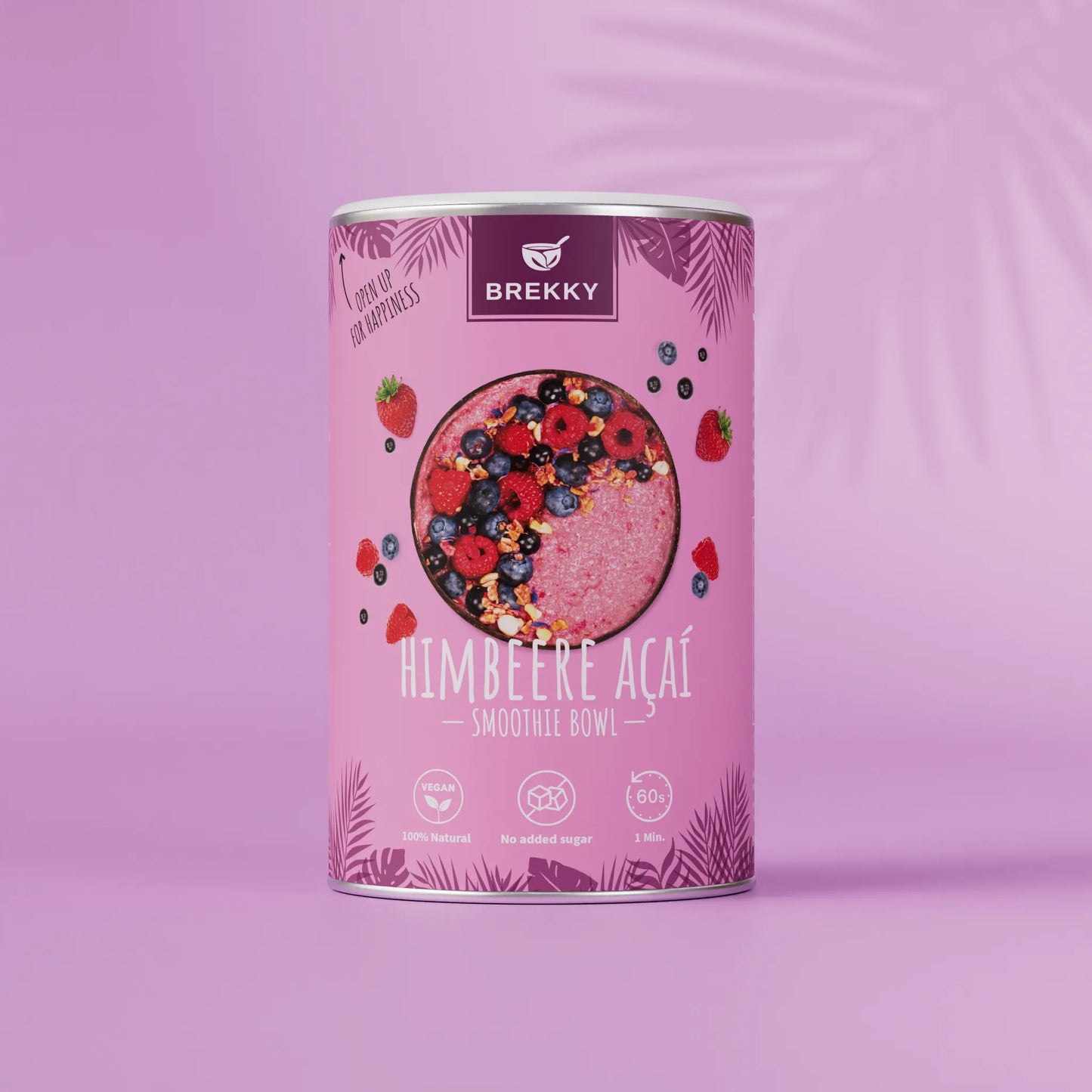
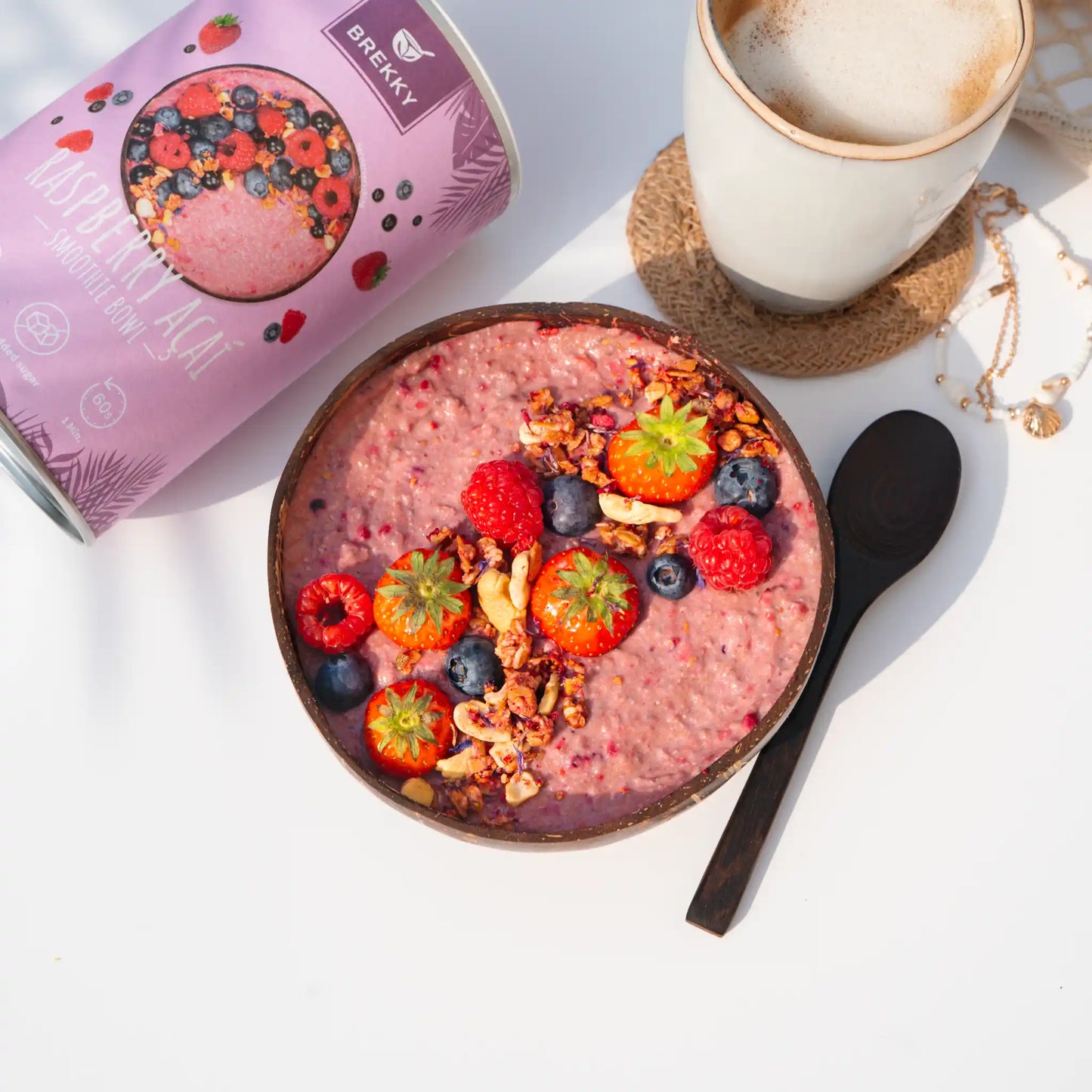


Acai smoothie bowl variations
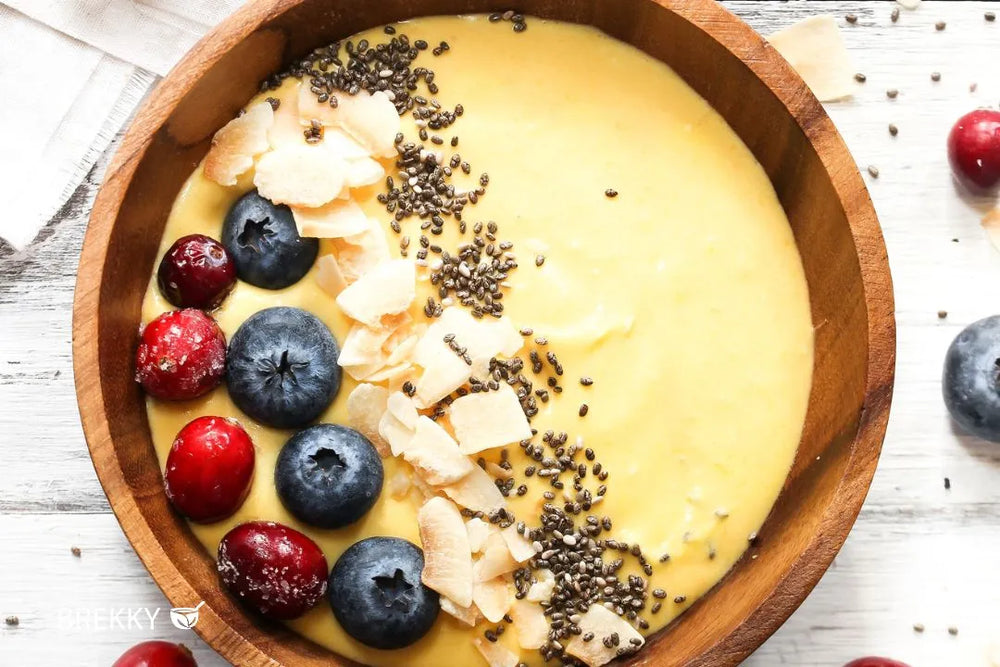
Tropical Acai Bowl
For those who like to think of distant beaches: the tropical version features exotic fruits.
- Ingredients : Acai powder or frozen packs, frozen mango, pineapple pieces, half a frozen banana, some coconut milk.
- Toppings : Fresh passion fruit, coconut flakes, chopped almonds or cashews.
- Taste : Fruity, sweet, and refreshing. Mango and pineapple add a bright touch, while coconut milk brings a Caribbean touch to the bowl.
This variation is especially suitable if you are looking for a sweet change or if you want to impress someone who likes the combination of tart and sweet fruit.
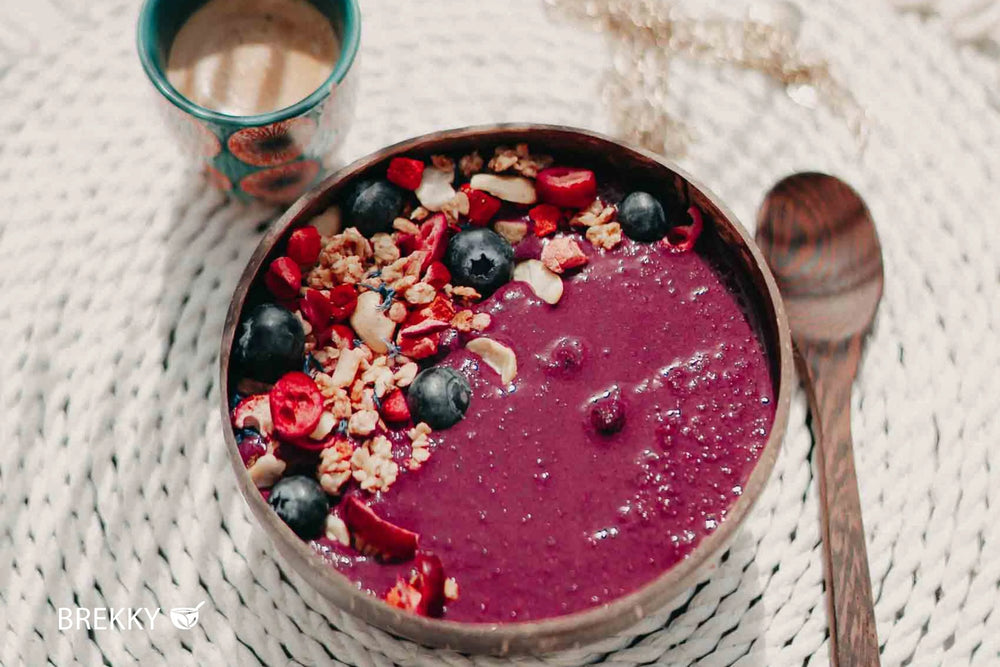
Protein Acai Bowl
Athletes or anyone who wants to increase their protein intake can choose the Protein Acai Bowl.
-
Ingredients : Acai powder, frozen banana, plant-based milk, a serving of protein powder (e.g. pea, soy or whey protein) and optionally some spinach for an extra dose of nutrients.
- Toppings : Preferably crunchy – almond flakes, chia seeds, cocoa nibs or oat flakes.
- Taste : Creamy and satisfying. The protein powder blends seamlessly, and the acai berry provides the dark color and berry flavor.
This version provides a balanced meal that can be enjoyed after a workout or as a power breakfast. However, be sure to follow the manufacturer's recommendations when it comes to protein powder dosage to avoid overly altering the taste.
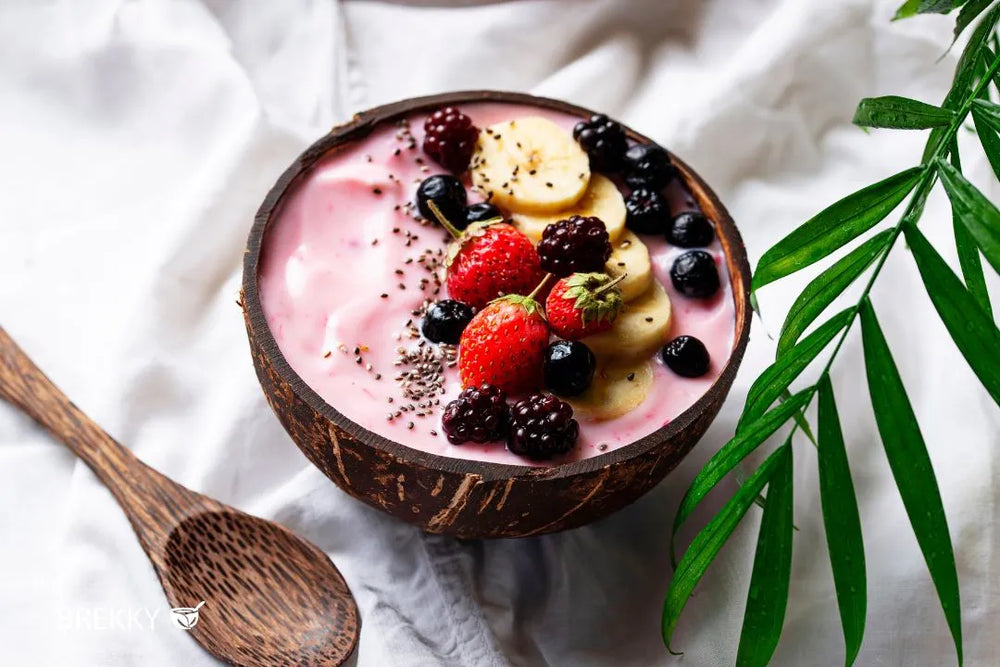
Low-Carb Acai Bowl
If you want to reduce carbohydrates, you can also enjoy the Acai Smoothie Bowl by adapting it:
-
Ingredients : Less sweet fruits (e.g. berries with low sugar content), frozen zucchini or cauliflower florets (sounds unusual, but is tasteless and increases the creaminess), acai powder, unsweetened almond milk.
- Toppings : coconut flakes, nuts, seeds, sugar-free granola.
- Taste : Amazingly fresh. Berries add a natural sweetness without putting a huge strain on your blood sugar levels.
This variation shows that even if you're on a low-carb or reduced-calorie diet, you don't have to miss out on the enjoyment of an acai smoothie bowl. The key here is to use vegetables and low-sugar fruits.
